Winter is here! Check out the winter wonderlands at these 5 amazing winter destinations in Montana
- Plan Your Trip

How Fast Do Cruise Ships Go
Published: December 11, 2023
Modified: December 28, 2023
by Julieta Jager
- Sustainability
Introduction
When it comes to the world of cruising, one of the factors that captivates travelers is the speed at which cruise ships travel. Whether you’re a first-time cruiser or a seasoned traveler, the speed of a cruise ship can impact your overall experience at sea. Understanding how fast cruise ships go and the factors that influence their speed can help you make informed decisions when planning your next cruise adventure.
As you embark on a cruise vacation, it’s essential to know that the speed of a cruise ship can vary depending on several factors. These factors can include the size and type of the ship, the route and distance it needs to cover, weather conditions, and the safety regulations imposed by maritime authorities. Cruise ship speeds are typically measured in knots, which represents the nautical miles traveled per hour.
Whether you’re sailing across the serene Caribbean waters, exploring the rugged Alaskan coastline, or crossing the vast expanse of the Atlantic Ocean, the speed at which your cruise ship travels will influence the duration of your voyage, the time spent in port, and the overall itinerary of your trip.
Understanding the speed of cruise ships is not just about the logistics of your trip; it can also impact your onboard experience. Some passengers enjoy the thrill of cruising at high speeds, while others prefer a more leisurely pace, allowing them to relax and take in the scenic views. Additionally, the speed of a cruise ship can affect its stability and maneuverability, which are crucial factors for both passenger comfort and safety.
In the following sections, we will delve into the various factors that can affect cruise ship speeds, explore the typical speeds of different types of ships, and discuss the decisions that influence the speed of a cruise ship. By gaining insights into these aspects, you’ll be better equipped to choose the right cruise for your preferences and make the most of your time at sea.
Factors Affecting Cruise Ship Speed
Several factors can impact the speed at which a cruise ship travels. Understanding these factors can provide valuable insight into why cruise ships operate at different speeds and the considerations that go into determining their cruising velocities. Here are some key factors that influence cruise ship speed:
- Ship Size and Design: The size and design of a cruise ship play a significant role in determining its speed. Generally, larger ships have more powerful engines and can achieve higher speeds. Additionally, the hull design and streamlined shape of modern cruise ships contribute to their ability to navigate through the water efficiently.
- Engine Power: The power of a cruise ship’s engines directly affects its speed. Cruise ships are equipped with powerful diesel-electric or gas turbine engines that provide the necessary propulsion to move through the water. The engine power is typically measured in terms of horsepower or kilowatts.
- Weather Conditions: Weather conditions at sea can significantly impact cruise ship speed. Strong headwinds or rough seas can slow down a ship’s progress, while favorable tailwinds can increase its speed. Cruise lines closely monitor weather conditions and may alter their itineraries or adjust speeds to ensure passenger safety and comfort.
- Route and Distance: The distance a cruise ship needs to travel and the chosen route can influence its speed. Longer routes may require higher cruising speeds to maintain the scheduled itinerary, while shorter routes can allow for a more relaxed pace. Additionally, ships traveling through narrow channels or congested ports may need to reduce their speed for navigation and safety reasons.
- Regulatory Restrictions: Maritime authorities impose various regulations on cruise ships, including speed limits in certain areas. These restrictions ensure the safety of the vessel, its passengers, and the environment. Cruise lines adhere to these regulations and adjust their speeds accordingly to comply with the rules.
These factors, in combination or individually, influence the cruise ship’s speed, highlighting the complexity of the decision-making process behind each voyage. Cruise lines carefully consider these factors to optimize the guest experience, maintain safety, and meet the expectations of their passengers.
Typical Cruise Ship Speeds
When it comes to cruise ship speeds, there is a wide range depending on various factors such as ship size, itinerary, and desired passenger experience. Here are some typical speeds you can expect to encounter on a cruise ship:
- Standard Cruising Speed: Most modern cruise ships have a standard cruising speed of around 20 to 24 knots (23 to 28 mph or 37 to 44 km/h). This speed allows for a comfortable voyage while maintaining a reasonable schedule to ports of call.
- Slow-Speed Cruising: Some cruise ships, especially those on longer itineraries or ones focused on scenic destinations, may operate at slower speeds. These slower speeds can range from 10 to 15 knots (11 to 17 mph or 18 to 28 km/h) and allow passengers to enjoy breathtaking views and a more relaxed onboard atmosphere.
- High-Speed Cruising: On the other end of the spectrum, certain cruise ships are designed and built for high-speed cruising. These ships can reach speeds upwards of 25 knots (29 mph or 46 km/h) and are commonly found on transatlantic or transpacific voyages, where time is of the essence, or on specialty cruises focused on fast-paced entertainment and activities.
It’s important to note that these are general guidelines, and actual cruise ship speeds can vary depending on the factors mentioned earlier. Additionally, cruise lines may adjust speeds to accommodate various operational considerations such as fuel efficiency, scheduling, and passenger comfort.
When planning your cruise vacation, it’s beneficial to research the typical speeds of the ships you are considering. The speed of a cruise ship can impact the overall duration of your voyage and the amount of time you have to explore each destination. If you prefer a leisurely pace and want to spend more time in port, you may opt for a cruise on a ship that operates at slower speeds. Conversely, if you are looking to cover more ground or have limited time, a high-speed cruise ship may be more suitable for your needs.
Being aware of the typical speeds of cruise ships enables you to select a voyage that aligns with your travel preferences and time constraints, ensuring a fulfilling and satisfying cruising experience.
High-Speed Cruise Ships
High-speed cruise ships are designed to offer passengers faster travel, allowing them to cover more ground in less time. These ships are equipped with powerful engines that enable them to reach impressive speeds and provide a unique cruising experience. Here are some key points about high-speed cruise ships:
- Transatlantic and Transpacific Voyages: High-speed cruise ships are commonly found on transatlantic and transpacific routes. These voyages involve crossing vast bodies of water, and the ability to cruise at high speeds allows passengers to reach their destinations more quickly, reducing the overall duration of the voyage.
- Time-saving: For travelers with limited vacation time or those who prefer to spend more time exploring port cities, high-speed cruise ships can be a great option. These ships can cover longer distances in a shorter amount of time, maximizing the time spent at various destinations.
- Entertainment and Activities: High-speed cruise ships often offer a wide range of onboard entertainment and activities to keep passengers engaged during the shorter voyages. From casinos and theaters to water parks and sports facilities, these ships aim to provide a lively and action-packed experience for guests.
- Modern Design: High-speed cruise ships are usually built with modern and sleek designs to enhance their speed and efficiency. These ships often incorporate advanced technologies, such as advanced stabilization systems, to ensure a smooth and comfortable ride even at high speeds.
- Specialty Cruises: Some cruise lines offer specialty high-speed cruises that cater to specific interests or themes. These cruises may focus on adventure, racing events, or other activities that require faster travel. They attract enthusiasts who seek the thrill of high-speed cruising combined with unique experiences.
It’s important to note that high-speed cruise ships generally prioritize speed over leisurely travel. While they provide an exciting and time-saving option for certain voyages, they may not offer the same level of relaxation and immersive experience as slower-paced cruises. Therefore, it’s essential to consider your preferences and priorities when selecting a cruise ship, taking into account the desired balance between speed and onboard amenities.
High-speed cruise ships are a testament to the advancements in maritime technology and navigation, offering passengers the opportunity to explore distant destinations within shorter timeframes. Whether you’re looking to cross an ocean quickly or seeking a fast-paced and lively onboard experience, high-speed cruise ships offer a unique and thrilling way to travel the world’s seas.
Slow-Speed Cruise Ships
While high-speed cruise ships cater to travelers who prefer a swift and efficient way of reaching their destinations, slow-speed cruise ships offer a more relaxed and leisurely cruising experience. Here are some key points about slow-speed cruise ships:
- Scenic Cruising: Slow-speed cruise ships are often chosen for itineraries that focus on scenic destinations. These ships allow passengers to take in breathtaking views, enjoy longer periods of time at sea, and fully immerse themselves in the beauty of the surrounding landscapes.
- Relaxation and Serenity: Slow cruising offers passengers an opportunity to unwind and fully enjoy the amenities and services available onboard. With more leisurely travel, there is ample time to lounge by the pool, indulge in spa treatments, or simply relax on your private balcony with panoramic views of the ocean.
- Extended Port Visits: Slow-speed cruise ships often allow for extended stays in port cities, giving passengers more time to explore and experience the local culture and attractions. This slower pace allows for a deeper immersion in each destination.
- Intimate Atmosphere: Slow-speed cruise ships are typically smaller in size, offering a more intimate and personalized experience for passengers. This creates a sense of community onboard, with opportunities to connect with fellow travelers and build lasting friendships.
- Relaxed Itineraries: Slow cruising operates on a more relaxed schedule, with shorter distances covered each day. This allows passengers to enjoy a stress-free journey with plenty of time to soak up the onboard activities, including enrichment programs, fine dining experiences, and live entertainment.
Slow-speed cruise ships provide a counterpoint to the fast-paced world we often find ourselves in. They appeal to those seeking a slower, more leisurely pace, allowing them to savor every moment of their cruise vacation. This type of cruising is particularly popular for scenic coastal journeys, such as Alaska cruises or river cruises.
It’s essential to consider your preferences, travel goals, and desired level of relaxation when choosing a slow-speed cruise ship. If you’re looking for a serene and laid-back experience with a focus on enjoying the onboard amenities and exploring each destination at a leisurely pace, a slow-speed cruise ship may be the perfect choice for you.
Slow cruising offers a truly unique and calming approach to travel, providing an opportunity to unwind, connect with nature, and create lasting memories, all while indulging in the luxurious comfort of a cruise ship.
Factors Influencing Cruise Ship Speed Decision
The decision regarding the speed at which a cruise ship operates involves several factors that cruise lines carefully consider. These factors aim to ensure the safety, comfort, and satisfaction of passengers, as well as the overall efficiency of the voyage. Here are some key factors that influence the cruise ship speed decision:
- Itinerary: The ports of call and the overall itinerary play a significant role in determining the cruise ship’s speed. Cruise lines analyze the distances between destinations and the time available in each port to decide on an appropriate cruising speed. They aim to balance the desired itinerary with the comfort and enjoyment of passengers.
- Passenger Experience: Cruise lines strive to create a memorable and enjoyable experience for passengers. The speed of the ship can contribute to this by allowing for on-time arrivals, maximizing the time available for activities and excursions, and providing a smooth and comfortable sailing experience.
- Fuel Efficiency: Fuel consumption is a crucial consideration for cruise lines, both from an environmental and financial standpoint. By optimizing the speed of their ships, cruise lines can achieve greater fuel efficiency, reducing emissions and operating costs. This may involve finding an optimal balance between speed and fuel consumption.
- Weather Conditions: Safety is paramount in the cruise industry, and weather conditions play a significant role in determining the ship’s speed. In the face of adverse weather, such as strong winds or heavy storms, cruise ships may slow down or alter their course to ensure the safety and comfort of passengers and crew members.
- Regulatory Constraints: Maritime authorities impose regulations regarding ship speeds in certain areas to protect the environment and ensure safe navigation. Cruise lines comply with these regulations and adjust the speed of their ships accordingly. These constraints can influence the overall speed decision for a particular voyage.
By carefully considering these factors, cruise lines aim to create an optimal balance between itinerary, passenger experience, fuel efficiency, safety, and compliance with regulations. The speed decision is a thoughtful process that takes into account multiple aspects to provide a memorable and enjoyable cruising experience for passengers.
It’s important to note that the specific influence of these factors may vary between cruise lines and individual voyages. Factors such as the size and design of the ship, the target market, and the cruise line’s overall strategy also come into play when determining the speed at which the ship will operate.
Ultimately, the cruise ship speed decision revolves around the overarching goal of ensuring that passengers have an incredible and satisfying experience while maintaining the highest standards of safety, environmental responsibility, and operational efficiency.
The speed at which cruise ships travel is a significant aspect of the overall cruising experience. Whether you prefer the excitement of high-speed cruising or the relaxation of a slower-paced journey, understanding the factors that influence cruise ship speeds is essential for planning a memorable and fulfilling cruise vacation.
Factors such as ship size, engine power, weather conditions, route and distance, and regulatory restrictions all play a role in determining the speed at which a cruise ship operates. By considering these factors, cruise lines aim to provide passengers with the optimal balance between itinerary, passenger experience, fuel efficiency, safety, and compliance with regulations.
Typical cruise ship speeds range from 20 to 24 knots for standard cruising, with slower speeds around 10 to 15 knots for more scenic itineraries and higher speeds exceeding 25 knots for transatlantic or transpacific voyages. Understanding the typical speeds of different cruise ships allows you to select a voyage that aligns with your preferences and time constraints.
Whether you choose a high-speed cruise ship for time-saving and exhilarating adventures or a slow-speed cruise ship for a relaxed and immersive experience, both offer unique advantages and opportunities for exploration. High-speed cruise ships excel in covering longer distances efficiently, while slow-speed cruise ships prioritize scenic cruising, extended port visits, and serenity.
The decision regarding cruise ship speed considers factors such as itinerary, passenger experience, fuel efficiency, weather conditions, and regulatory constraints. Cruise lines carefully weigh these factors to provide an optimal cruising experience that ensures passenger satisfaction, safety, and environmental responsibility.
Ultimately, the speed at which a cruise ship travels contributes to the overall enjoyment and fulfillment of your cruise vacation. By understanding the factors influencing cruise ship speeds and considering your preferences and priorities, you can choose the perfect cruise ship and itinerary to create lasting memories and make the most of your time at sea.

- Privacy Overview
- Strictly Necessary Cookies
This website uses cookies so that we can provide you with the best user experience possible. Cookie information is stored in your browser and performs functions such as recognising you when you return to our website and helping our team to understand which sections of the website you find most interesting and useful.
Strictly Necessary Cookie should be enabled at all times so that we can save your preferences for cookie settings.
If you disable this cookie, we will not be able to save your preferences. This means that every time you visit this website you will need to enable or disable cookies again.

How fast do cruise ships go: Unraveling the Speed Secrets of Cruise Ships
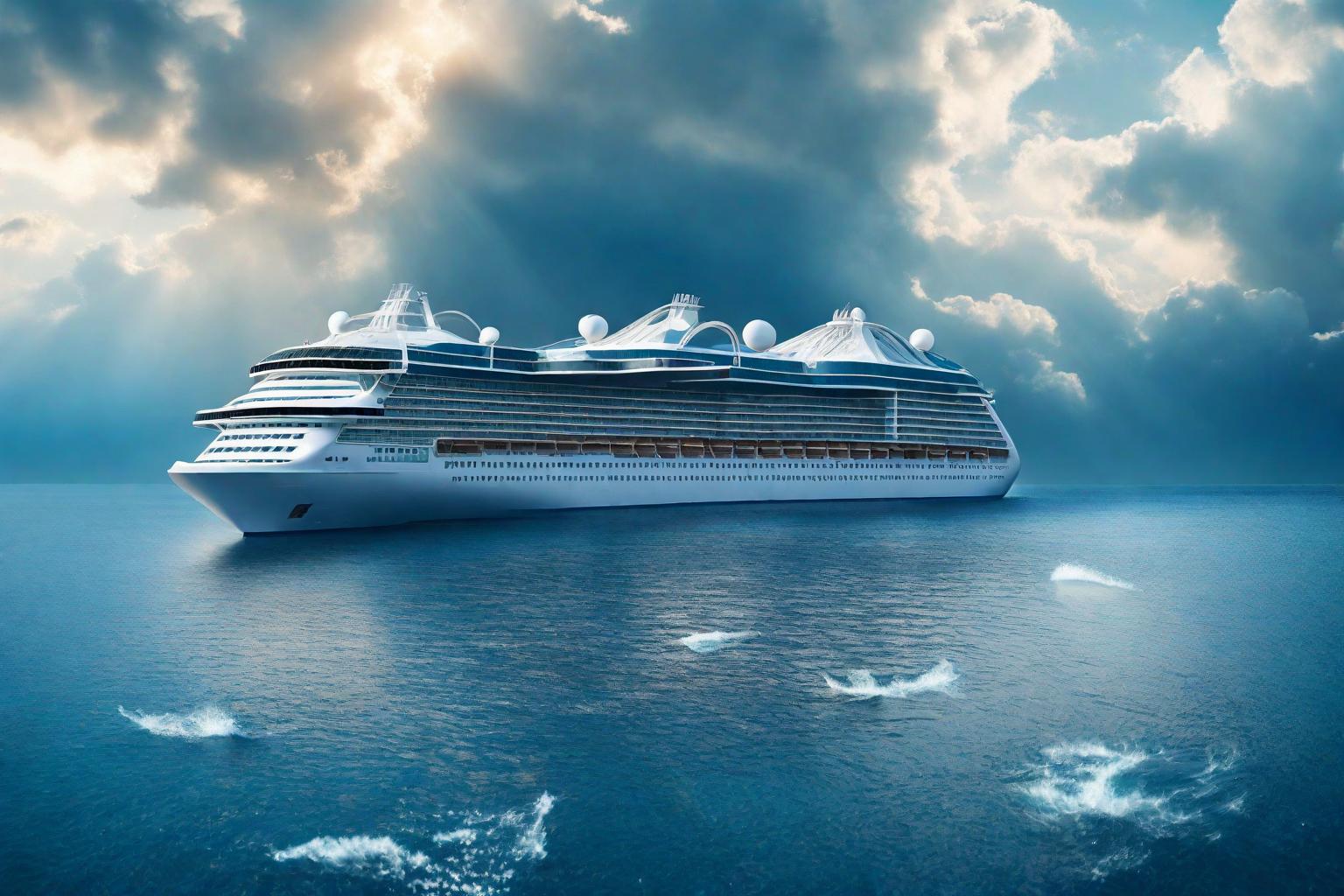
Have you ever wondered, “How fast do cruise ships go?” or “How far can a cruise ship travel in a day?” Setting sail on a cruise is an exhilarating experience, with the vast ocean expanse unfolding before you. Join us as we embark on a deep dive into the captivating realm of cruise ship speeds, uncovering the technological marvels that propel these ocean giants and exploring examples from renowned cruise lines.
1. Cruise Ship Speed Basics:
When picturing a cruise ship, images of leisurely voyages across calm waters often come to mind. But have you ever wondered how fast these massive vessels actually travel? Let’s dive into the basics of cruise ship speed:
Measuring Speed:
Cruise ship speed is typically measured in knots , which are nautical miles per hour (1 knot = 1.852 km/h). Unlike land vehicles with speedometers, cruise ships rely on a log to measure speed. This log throws a line with a weighted impeller attached, and the speed is determined by the number of rotations per unit time.
Average Speed:
The average cruise ship travels at a speed of around 20 knots (23 mph) when cruising. However, this can vary depending on several factors:
- Ship Size and Design: Larger ships often have more powerful engines, allowing for higher speeds. Newer ships also tend to be more aerodynamic and efficient, contributing to faster cruising speeds.
- Weather Conditions: Rough seas and strong winds can significantly slow down a ship. Cruise lines typically adjust speed to ensure passenger comfort and safety.
- Itinerary: If a cruise has multiple ports of call close together, the ship may need to travel faster to maintain the schedule. Conversely, cruises with longer stretches at sea might cruise at slower speeds for fuel efficiency and a more relaxed atmosphere.
- Fuel Efficiency: Cruise lines are increasingly focused on reducing fuel consumption and emissions. Newer ships often have features like optimized hull designs and advanced propulsion systems that allow for efficient cruising at lower speeds.
Maximum Speed:
Most modern cruise ships have a maximum speed of around 30 knots (34.5 mph) . However, they rarely reach this speed due to the factors mentioned above. Exceeding cruising speed can also be uncomfortable for passengers due to increased vibration and noise.
2. Notable Cruise Line Examples:
Let’s take a closer look at the speed prowess of some notable cruise lines:
- Royal Caribbean’s Oasis Class: Despite their massive size, ships like the Oasis of the Seas can achieve speeds of up to 22 knots.
- High-Speed Ferries: Smaller vessels, resembling cruise ships, but categorized as high-speed ferries, can surpass 30 knots.
- The fastest cruise ship in the world, the Royal Caribbean International’s Anthem of the Seas , can reach a top speed of 42 knots (48.6 mph). However, this is only used in emergency situations.

3. Propulsion Systems at Play: Cruise ships utilize diverse propulsion systems for efficient navigation. These include:
- Diesel-Electric Propulsion: A prevalent choice in modern ships, offering flexibility and fuel efficiency.
- Azipod Propulsion: These innovative podded units contribute to both maneuverability and speed.
- Gas Turbines: Some cruise liners incorporate gas turbines to bolster power output during instances demanding higher speeds.
4. Safety Prioritization: Safety takes precedence over speed in the cruise industry. Considerations such as weather conditions and the imperative for smooth navigation dictate captains’ decisions regarding cruising speeds.
5. Navigation Precision: Cruise ships deploy advanced navigation technologies, including GPS, radar, and sonar systems, ensuring precise maneuvering even at elevated speeds.
6. Daily Distance Covered:
The daily distance covered by a cruise ship can vary significantly depending on several factors, including:
Cruising speed: As mentioned previously, the average cruise ship travels at around 20 knots (23 mph) when cruising. However, this can range from 15-30 knots depending on the factors discussed earlier like ship size, weather, and itinerary
Itinerary: The planned route and number of ports of call significantly impact daily distance. Cruises with multiple close-by ports might cover shorter distances daily, while those with longer stretches at sea or farther-flung destinations might travel farther.
Duration: Shorter cruises naturally cover less distance per day compared to longer voyages.
Specific examples:
- A 7-day Caribbean cruise with multiple ports might cover around 200-300 nautical miles per day.
- A transatlantic crossing could involve daily distances of 500-600 nautical miles.
- A repositioning cruise between continents might cover even greater distances, reaching 800-1000 nautical miles per day.
Finding specific information:
Cruise lines typically publish itineraries showcasing the ports of call and estimated sailing times. Based on the sailing times and average cruising speed, you can estimate the daily distance. Additionally, some cruise booking websites and online resources provide tools to calculate daily distances based on the chosen itinerary.
Remember, daily distance is just one aspect of your cruise experience. Consider factors like destinations, onboard activities, and overall atmosphere when making your decision.
Cruise ship speeds represent a delicate balance of maritime engineering, combining technological sophistication with a commitment to passenger safety and comfort. As you embark on your next cruise adventure, take a moment to appreciate the engineering marvels that propel you across the seas at a controlled and comfortable pace. Bon voyage!
Here are official links from reputable sources and cruise lines for more information:
- Royal Caribbean – Cruise Ship Speed
- Carnival Cruise Line – Ship Fact
You may also like: Best River Cruise in USA
Leave a Reply Cancel reply
Save my name, email, and website in this browser for the next time I comment.
How Fast do Cruise Ships Go?
Disclosure: This post may contain affiliate links. We may receive compensation when you purchase via my links at no cost to you. See my disclosure for more information.
If you’ve ever sailed on one of these huge floating cities, you know the feeling of relaxing on the top deck and looking out over the horizon as your ship travels to its next port.
As you sail through the open seas, you’ve likely wondered, how fast do cruise ships go?
Table of Contents
How Fast Do Cruise Ships Go?

The average cruising speed of a modern cruise ship is approximately 21 knots , which is equivalent to about 24 miles per hour . A cruise ship’s top speed is two to three knots higher than its cruising speed. However, cruise ships rarely reach maximum speed except in specific situations like emergencies, avoiding bad weather, or sea trials .
Cruise ship speeds vary depending on the specific ship. For instance, Royal Caribbean’s Oasis of the Seas travels at about 20.2 knots, while Norwegian Cruise Line’s Norwegian Jade can reach speeds up to 24.6 knots . However, it’s important to note that cruise ships generally prioritize passenger comfort and fuel efficiency over speed.
Thus, cruise ships often travel at slower speeds than their maximum capability. Slower speeds conserve fuel and provide a smoother ride for passengers.
The fastest cruise ship currently in service is the Queen Mary 2 , capable of speeds up to 30 knots .
Factors That Affect Cruise Ship Speed

Several factors can affect the speed of a cruise ship:
- Cruise Itinerary: Cruise ships must arrive on time at each port of call. Arriving late at a port leads to substantial fines and unhappy passengers who miss their shore excursions. Alternatively, arriving early uses excessive fuel consumption as the cruise ship travels faster than necessary.
- Weather Conditions : Adverse weather conditions, such as high winds or rough seas, can significantly impact a ship’s speed. Sometimes, ships must slow down to ensure passenger comfort and safety in rough waters . Cruise ships also travel faster to avoid hazardous weather systems. It’s one of the few times a cruise ship will reach top speed.
- Sea Conditions : The condition of the sea, including currents and tides, can either aid or hinder a ship’s progress. For instance, sailing with a strong current can increase a ship’s speed, while traveling against it can slow it down.
- Fuel Efficiency : Cruise ships travel at speeds that optimize fuel consumption while arriving at port on time. Higher speeds consume more fuel, so ships may travel more moderately to maintain fuel efficiency, reduce environmental impact , and decrease fuel costs.
- Navigational Restrictions : Certain areas, like narrow channels or environmentally sensitive regions, may have speed restrictions to ensure safety and minimize environmental impacts.
- Passenger Comfort : Cruise ships focus on passenger experience. Cruise ships travel at speeds that ensure the most comfortable journey, minimizing vibrations and motions that can cause discomfort or seasickness for crusie passengers .
- Safety Regulations : Safety considerations, such as avoiding collisions with other vessels or navigating safely through congested or hazardous areas, can also dictate a ship’s speed.
Each of these factors is considered by the ship’s captain and navigation team to determine the most appropriate speed for a given situation, balancing efficiency, safety, and passenger comfort.
What is a Knot?
In maritime and aviation travel, a knot is a unit of speed . It is defined as one nautical mile per hour.
What is a nautical mile? It’s a unit based on the Earth’s circumference, equating to one minute of latitude. This means it’s about 1.15078 miles or 1.852 kilometers.
To understand this better, imagine the Earth’s circumference divided into 360 degrees, and each degree further divided into 60 minutes. Each of these minutes is a nautical mile.
When navigating, a nautical miles are often called “minutes of arc.”
How does this compare to the familiar land mile? Well, a knot is roughly 15.1% longer than a mile on land, also known as a statute mile.
Knots are preferred in sea and air navigation as they align with Earth’s latitude, making them more practical for long-distance travel where Earth’s curvature matters.
The history behind these measurements is fascinating. The land mile dates back to Roman times, defined as 1,000 paces, only counting the left foot. Later, Queen Elizabeth I in 1593 fixed the statute mile at 5,280 feet. The term “mile” itself comes from the Latin “mille passus,” meaning “thousand paces.”
On the flip side, nautical miles, established in 1929, are tied to the Earth’s latitudinal degrees – one nautical mile equals one minute of latitude.
According to the NOAA “Using latitude and longitude coordinates is more practical for long-distance travel, where the curvature of the Earth becomes a factor of accurate measurement.”
Why Do Cruise Ships Use Knots Instead of Miles Per Hour?
Vessels that travel long distances, such as ships, planes, and rockets, use latitude and longitude for measuring distances on a map.
Nautical miles are the preferred measure of distance at sea because they allow sailors to quickly access distance on nautical maps which use longitude and latitude.
Fun fact: Air and space travel also use nautical miles to measure distance.
How to Convert Knots to Miles Per Hour?
To convert a speed in knots to miles per hour, simply multiply the knots by 1.1508. The result is the speed in miles per hour.
What is the Fastest Cruise Ship?

Many people consider the fastest cruise ship to be Cunard’s Queen Mary 2 , which has a top speed of 30 knots. But, the Queen Mary 2 isn’t actually a cruise ship – it’s an ocean liner.
The ship was originally built to transport passengers across the Atlantic. Its pointed bow, reinforced hull, raised lifeboats, and lower center of gravity are all hallmarks of an ocean liner.
Compared to a cruise ship, an ocean liner is defined as a ship whose primary purpose is transportation, while a cruise ship is built for leisure.
There is no official fastest cruise ship as far as I can find.
And there doesn’t need to be.
Cruise ships are supposed to be leisurely. While I’m sunbathing on deck, enjoying a tropical drink, I’m not concerned about how fast our ship is traveling.
So what does it matter which cruise ship is the fastest?
What’s the Fastest Ocean Liner in History?

Although the Queen Mary 2 is the fastest ocean liner in operation, it’s not the fastest ever built.
During the post-war years of World War II, ocean liners were competing for the fastest crossing of the Atlantic.
In 1952, the SS United States became the world’s fastest ship maintaining an average cruising speed of 35.5 knots and a top speed of 39 knots. A record it still holds today!
Marcello De Lio
Trending now

- Cruise News
- Cruise Tips
- All Cruise Lines
- Carnival Cruise Line
- Celebrity Cruises
- Disney Cruise Line
- MSC Cruises
- Norwegian Cruise Line
- Oceania Cruises
- Princess Cruises
- Royal Caribbean
- Ports of Call
- Cruise Videos
- Port Webcams

- Advertiser Disclosure
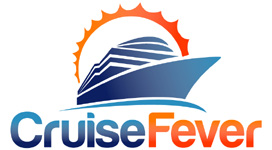
How Fast Do Cruise Ships Go? | Cruise Ship Travel Speed
Cruising Speed of Some Popular Cruise Ships
“Cruising speed” is the speed at which most cruise ships travel on open seas. It is sometimes referred to as service speed. It is not the maximum speed but a rate at which the ship will offer a comfortable ride, using the least amount of fuel for the distance traveled. If a cruise ship traveled with “the pedal to the medal” it would not only give the passengers a rough sailing, but it would also use much more fuel than necessary.
Here is the cruising speed of some popular cruise ships:
Carnival Cruise Line: Carnival Vista: 23 knots Carnival Breeze: 22 knots Carnival Liberty: 19.6 knots Carnival Fantasy: 19.5 knots Carnival Dream: 22.5 knots
Royal Caribbean International: Oasis of the Seas: 20.2 knots Freedom of the Seas: 22 knots Quantum of the Seas: 22 knots Majesty of the Seas: 21 knots Jewel of the Seas: 24 knots
Norwegian Cruise Line: Norwegian Bliss: 22 knots Norwegian Breakaway: 22 knots Norwegian Epic: 22.5 knots Norwegian Sky: 23 knots Norwegian Jade: 24.6 knots
Fastest Cruise Ship in the World
So what is the fastest cruise ship in the world? Well it really depends what class of cruise ship you are talking about. The 25,000 ton Olympia Voyager (aka Costa Voyager, Voyager, and Grand Voyager and now owned by Bohai Ferry Company) can travel as fast as 27 knots or 31 miles per hour. But 25,000 tons is very small by the standards of today’s cruise ships, and the Voyager is really an ocean liner and not a cruise ship.
When you have ships like the Oasis of the Seas, which is 9 times larger at 225,282 tons, traveling at speeds of 20.2 knots or 23 mph, it really is astounding.
The Queen Mary 2 holds the title of fastest cruise ship in the world with speeds of 30 knots . That’s over 34 miles per hour. This is a phenomenal speed considering the ship is close to 150,000 gross tons in size . This incredible speed allows Cunard to offer 7 day transatlantic cruises between Southampton and New York on Queen Mary 2 . No other vessel this size can cross the Atlantic as fast as Queen Mary 2 .
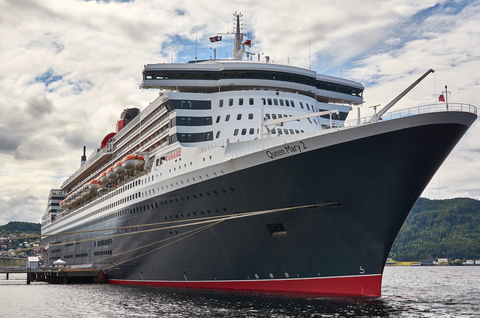
Royal Caribbean’s Radiance Class ships are quite speedy as well, being able to travel at speeds of 25 knots or 28 mph.
But just because these cruise ships CAN travel that fast doesn’t mean they ever do. Usually the cruising speed of one of these massive ships is around 18-22 knots. So when you ask, “How fast do cruise ships go?” you have to consider that these ships aren’t out there racing each other. They are more concerned with luxury than speed.
Some Notable Mentions for Fastest Cruise Ships
MS Chinese Taishan , formerly known as Grand Voyager and Costa Voyager, has a blazing top speed of 28 knots . The ship currently sails in Asia, but in 2005 a freak 40 foot wave in the Mediterranean broke through a window on the bridge and did some damage to the ship’s engine controls. In 2014 the vessel was sold to Bohai Ferry Company for $43 million dollars. Chinese Taishan is only a 24,427 ton vessel with a maximum capacity of 927.
Built in 1995, MV Oriana was the first new ship commissioned for P&O Cruises. This vessel hit 26.2 knots in sea trials and is considered the 3rd fastest cruise ship in the world. The ship is 69,153 tons with a maximum capacity of 1,928.
When Do Cruise Ships Travel at Top Speed?
If there is a storm at sea a cruise ship will have to go a little faster to get around it or to get away from it. In these cases it’s worth giving the passengers a bumpy ride to avoid an even bumpier one if the ship ran into the storm.
In cases of emergency a cruise ship may travel at top speeds as well. For instance, if a distress call comes in and the ship needs to assist another vessel a captain will use the ship’s full resources to lend aid as quickly as possible.
Learn the cruise secrets most people don't know and cruise like a boss. Check out Intelligent Cruiser here for a better cruise vacation. (Sponsored)
- cruise speed
- cruising speed
- fastest cruise ship
- knots to mph
Princess Cruises Changes Beverage Limit for Their Premier Package to Unlimited
10 ways rookies waste money on a cruise, new cruise ships under construction/ordered by cruise lines 2024-2036, 6 activities on cruise ships you can’t do anymore, related articles, how many cruise ships does carnival cruise line have in their fleet, list of carnival cruise ships newest to oldest, (2024) royal caribbean ships by age: newest to oldest (complete list), cruise ship lifeboats: 10 surprising facts most people don’t know, recent popular posts.

Two brothers started Cruise Fever in 2011 when they decided they couldn't stop cruising so they might as well write about it. Do you have Cruise Fever too? Follow along on this incredible voyage!
© 2011-2024, Cruise Fever ®. All rights reserved
- Privacy Policy
- Cruise Newsletter

Ship Gadgets
Enrich your shopping list wisely.
How Fast Do Cruise Ships Go?
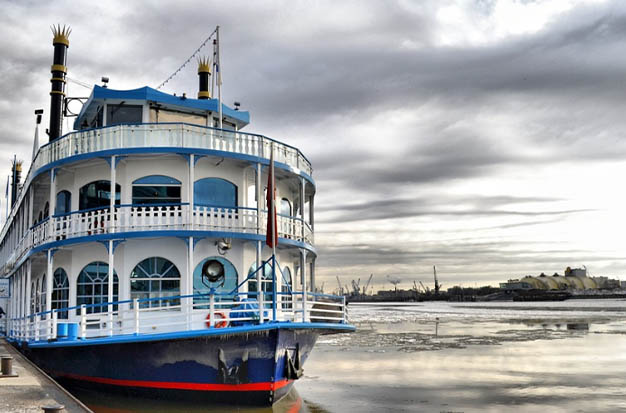
You might be curious about how quickly a cruise ship can travel if you’re about to board a luxurious vessel and set out on an unforgettable ocean voyage. There are actually a few ways to respond to that question. Cruise ships can move surprisingly quickly, but they rarely do.
Table of Contents
The Difference Between Mph And Knots
Speed on land is expressed in miles per hour, or mpg. Speed is expressed in knots on land and in the air. This has an intriguing cause.
In the past, sailors would throw a buoyant object over the bow of their ship and then time how long it took for the stern to catch up with the object to determine their speed. Known as a “Dutchman’s log,” this speed-measuring method typically used a piece of wood. In the late 1700s, sailors devised and employed a wedge-shaped, lead-weighted “chip log” for the same purpose. The chipboard was the world’s first navigational tool, according to Bright Hub Engineering, with its attached reel of rope knotted at regular intervals.
The sailor’s chipboard required two people to deploy—one to hold the rope reel and the other toss the tool. The duration it took for the boat to depart from the chip log was calculated using an hourglass. Although this antiquated measuring device could only approximate speed, it did give us the term “knots,” which is still used to describe ship speed today.
Knowing the formula makes converting knots to miles per hour simple. According to Boat Safe, one knot is roughly equivalent to 1.15 miles, so multiplying knots by 1.15077945 will show you how fast a ship travels in mpg.
A cruise ship is a large boat with all the amenities you could possibly need for a relaxing vacation, such as lodging, sports, and recreation areas, dining options, and entertainment venues. It is somewhat surprising that a cruise ship can float on water and travel great distances considering its weight, which is typically over 70,000 tons, or 140 million pounds. Its enormous size also raises the question of how quickly it can move.
There are numerous varieties of cruise ships. Some of them are designed to contain more rooms or amenities, while others are built with speed in mind. Normal cruise ships cruise at 21 to 24 knots per hour, but high-speed cruise ships can reach 30 knots or more. The majority of cruise ships are propelled forward or backward by gas turbines or diesel-electric engines, which cut through the water. The power output of an engine, along with the size and weight of the cruise ship, all affect its speed.
Even though typical cruise ships cruise at 21 to 24 knots, they are actually capable of going even faster. They must limit fuel consumption, which is one of the factors contributing to their slower speed. Cruise ships consume a lot of fuel, and the “mileage” per gallon of fuel is measured in feet, not in miles. For a typical cruise ship to travel just a few hundred feet, it needs about 10 gallons of fuel. When a ship is moving at top speed, it uses more fuel, and there might not be enough left for it to finish the journey. Slower travel is more economical and will guarantee that the ship will arrive at its destination on time. Additionally, the speed of cruise ships varies depending on where they are in their voyages. For example, when they are in open water, they tend to travel faster, and when they are nearing a port, they tend to travel slower.
Read More: How Much Fuel Does A Cruise Ship Use?
What Cruise Ship Is The Fastest In The World?
Speed is not a primary goal for Royal Caribbean cruise ships because they are designed to be leisure vessels rather than ocean liners that are intended to transport passengers from one port to another.
However, traveling at high speeds is still necessary for the event of an onboard emergency or to avoid bad weather.
With a top speed of 30 knots or 35 mph, the Queen Mary 2 of Cunard is/was generally regarded as the fastest ship. She was only marginally slower than the sister ship Queen Elizabeth 2, which had a top speed of 32 knots.
In order to achieve her higher-than-average speeds, Queen Mary 2 uses an integrated electric propulsion system as opposed to the common diesel-electric setup used on many ships.
Aside from those Cunard’s vessels, many modern cruise ships reach top speeds that are similar to or slightly faster than 25 knots for Harmony of the Seas.
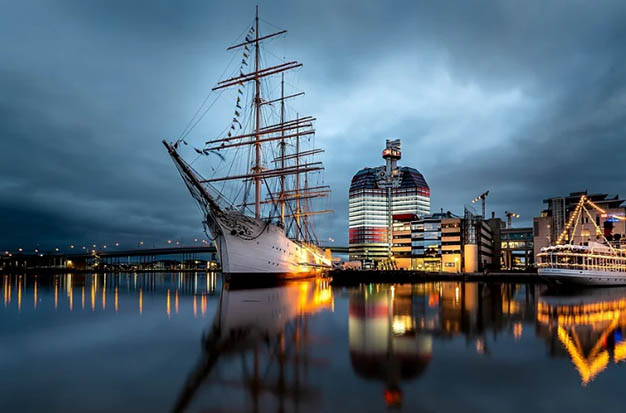
Why Do Cruise Ships Move At A Slower Pace?
Cruise ships not only rarely sail at their top speed, but they also frequently sail at much slower speeds.
A cruise ship may slow down for a variety of reasons aside from fuel conservation. Undoubtedly, the amount of fuel consumed can have a significant impact on the choice of speed, but other factors may call for a slower speed.
Close proximity of ports of call is one typical explanation. Every hour that a cruise ship spends in port after their scheduled arrival costs the company money in docking fees. A ship will therefore slow down so that they dock precisely at the time scheduled and not earlier.
On days when the ship is at sea, it’s typical for it to take its time so that passengers can take advantage of the good weather. When the distance between ports is close, this is especially true.
The captain of a ship may occasionally even slow it down so that everyone on board can see a sunset or other passing scenery.
Government regulations in some regions of the world mandate that cruise ships move slowly.
How Does Size Affect Speed And Fuel Consumption?
Like the vehicles we drive, cruise ships come in a variety of sizes. Size has an impact on a ship’s fuel consumption and speed. Generally speaking, the force needed to accelerate any vehicle—be it a car or a boat—increases with its weight. More fuel is needed for greater force.
Massive cruise ships require a lot of fuel to keep up an average cruising speed. By the turn of the twenty-first century, some cruise ships weighed as much as 220,000 tons, compared to the 20,000 to 30,000 tons of large cruise ships built in the 1970s.
Of course, huge cruise ships require a lot of fuel to operate. Larger cruise ships can burn up to 250 tons of fuel per day, which equates to over 80,000 gallons of gasoline. A gallon of fuel is burned every 30 to 60 feet of travel.
On a cruise ship, however, even modest gains in productivity can have a big impact. Even though they generally move at the same speed, smaller ships, for instance, use a lot less fuel to cover the same distance than larger ones. The cruise ships at Windstar are considerably smaller than the average ship, which results in less fuel use and fewer passengers.
While the average large cruise ship can accommodate up to 7,000 passengers—the equivalent of a small floating town—our largest ship at Windstar can only accommodate 342 people. You can expect attentive service and roomy suites in this setting, which offers a much more warm and cozy atmosphere. You’ll also have access to special, empty ports that huge ships are forced to avoid due to their size.
When you are late for work or need to make it to the store before it closes, speed can be crucial. Other times, like when you’re on a cruise, you might want to avoid or at least not think about speed. Fortunately, cruise ships have to move more slowly than what we’re used to with cars or airplanes, which is great for tourists who love to see the world by ship. A cruise ship wouldn’t be able to sail through beautiful scenery without consuming too much fuel.
Leave a Reply Cancel reply
Your email address will not be published. Required fields are marked *
Save my name, email, and website in this browser for the next time I comment.

How Fast Do Cruise Ships Go?

If you’ve ever taken a cruise or are planning one in the future, you might wonder, how fast do cruise ships go?
The average cruise ship travels at 20kts (Knots) between ports.
Introduction
Figuring out how fast cruise ships go goes hand in hand with learning all about cruise ship travel. Exploring how cruise ships operate teaches us all about the speed of a cruise, the differences between ship types, and general marine travel.
In short, the cruising speed of a ship dramatically depends on the ship’s size and design. The ship’s structure will determine how it burns fuel and how it navigates changing ocean conditions, all of which affect its speed.
The ship’s speed also depends on the cruise itinerary. A cruise ship needs to get to the next port on time, not early or late. So ships don’t always travel at their standard service speed.
Below, we answer all of your questions on speed and cruise ships. We’ll talk about the different variables that affect speed and see how cruise ships compare to other ocean-going vessels.
So, if you’re interested in how cruise lines operate and what affects ship speed, keep reading.
Do Cruise Ships Travel Faster at Night?
It’s a common misconception that cruise ships travel faster at night than during the day. This is probably because cruise ships slow down as they enter and leave ports. Since most cruise ships only enter or leave ports during the day, it can seem like they travel faster at night.
What Affects Speed on Cruise Ships
In reality, how fast cruise ships go has little to do with the time of day and more to do with fuel efficiency, weather, the ship’s schedule, and passenger comfort.
Fuel Consumption
Cruise ships have better fuel economy at certain speeds, and for both environmental and financial reasons , many cruise liners make fuel savings a priority. So, the speed of a cruise often depends on what is most fuel-efficient.
Weather Conditions
Wind and weather forecasts both play a role in how fast a cruise can travel. If the wind is working against the boat, it may slow it down.
Also, if the weather forecast predicts a major storm, the captain may decide to speed up to outrun the bad weather.
Cruise captains maintain speed to get them to port on time, not too early or too late. Ports typically charge by the hour so getting there early is costly. At the same time, cruise ships have a schedule they need to keep.
Passenger Comfort
Cruise ship speed also affects passenger comfort. Going faster can lead to a bumpy ride as faster speeds pull more of the hull out of the water. Since giving passengers a comfortable ride is vital, it’s unlikely that a captain would increase the speed unnecessarily.
However, if a passenger has a medical emergency and needs to reach the nearest port, the captain may choose to take the cruise ship to top speed.

What Is the Speed of the Fastest Cruise Ship?
Finding the fastest cruise ship isn’t as straightforward as you may think.
Cruise ships rarely travel at top speed. Instead, they stick to their cruising speed, which benefits fuel consumption and makes for a smoother ride. They typically only travel at top speed during sea trials when there are no passengers and burning more fuel isn’t a concern.
So, how is the top speed of a cruise ship measured?
They use an average based on the ship’s sea trial.
Sea trials are part of the safety tests that cruise ships undergo before their maiden voyage. During sea trials, the ship will have to test its maximum speed.
However, water conditions, bad weather, and several other factors can affect cruise ship speed on any particular day. So, the same ship might register two different top speeds if we were to give it trials on two separate days.
The Knot and the Nautical Mile
Before going any further, it’s crucial to understand how speed is measured on water.
“Knots” means nautical miles per hour. One nautical mile is different from one land mile. One land mile is 5,280 feet, while one nautical mile is 6,076 feet. So, to convert knots or nautical miles per hour to land miles per hour, you have to add 15% to the land mile.
Cruising Speeds and Top Speeds
The fastest cruise ships can reach a top speed of thirty knots. Thirty knots is fast for a ship, and most cruise ships never travel at it. Instead, they travel at their cruising speed.
The speed of a cruise on a Royal Caribbean Cruise ship, for example, is 18-20 knots. And most other cruise lines have an average speed of between 19 and 22 knots. For perspective, a 20-knot average cruising speed is the same speed as 23 miles per hour on land.
The Fastest Ship
Given how large cruise ships are, an average ship’s speed of 20 knots is pretty impressive. However, there are some much faster passenger vessels on record.
For example, the SS United States could make an Atlantic crossing at 35 knots! That’s a speed equal to forty miles per hour on land. The SS United States is retired now, but it still holds the record for the fastest ocean liner.
How Fast Does Queen Mary 2 Go?
When we hear someone ask “how fast do cruise ships go?”, the Queen Mary 2 always comes up. The Queen Mary 2 is the fastest ocean liner currently in service. It has an average speed of 28.5 knots but a maximum speed of 30 knots.

Traveling on the Queen Mary 2
The Queen Mary 2 can make a transatlantic crossing in five days at its top speed. However, it usually sticks to its average cruising speed and makes the trip in seven days.
The Queen Mary 2 is an impressive vessel. It’s the biggest ocean liner ever to set sail, weighing 149,215 tons and measuring 1,132 feet long. That’s twice as long as the Washington Monument is tall!
Traveling for Pleasure vs. Traveling for Transportation
Though the Queen Mary 2 carries passengers and has many features similar to a cruise ship, like a theater, spa, and nightclub, it’s not exactly a cruise ship. It’s an ocean liner. Technically, cruise ships are for pleasure, while ocean liners are for transportation.
While a cruise ship will take you to specific cruise destinations, it usually ends where it began. If your cruise ship travels from Port Canaveral, it will head back there at the end of the trip.
Ocean Liner Differences
Ocean liners transport passengers to a new location. The Queen Mary 2 , for example, will take you across the Atlantic from the US to Europe.
Ocean liners tend to have greater traveling speed because they’re built with transportation in mind. Besides being designed for maximum speed, ocean liners also have a few other key differences.
They tend to have a longer, pointed bow that helps them navigate high rising ocean waves. They also have an extra thick hull to maintain stability in rough conditions.
All of this allows ocean liners to navigate open waters more efficiently than cruise ships. So, an ocean liner’s cruising speed and top speed will always be greater than the speed cruise ships sail.

Can a Cruise Ship Go In Reverse?
Yes, a cruise ship can go in reverse. Of course, putting a massive cruise ship in reverse is a bit different than backing up your car.
How Thrusters Work
Cruise ships typically have bow thrusters that sit along the ship’s bow and are essentially locked in position. These help power the ship but don’t do much to help steer it.
Most ships also have two or three Azipods. Azipods consist of a pitched propeller mounted within a steerable pod. The pod can turn the propeller a full 360 degrees.
Typically, the Azipods all point in the same direction, towards the ship’s stern, which propels the ship forward. However, captains can adjust the amount of thrust and the direction of each pod, allowing the vessel to turn or even travel in reverse.
By using the Azipods and bow thrusters together, cruise ship captains can easily navigate ports and other tight areas that cruise ships travel.

How Fast Do Wooden Ships Go?
Asking how fast do cruise ships go might make you wonder how they compare to the wooden boats of yore. Wooden ships didn’t have nearly the same maximum speeds as modern ships.
Wooden Ships vs. Modern Vessels
A fast wooden ship had a service speed of between 13 and 17 nautical miles per hour. The USS Constitution , for example, capped out at 13 nautical miles per hour. Meanwhile, the famous Cutty Sark reached a top speed of 17.5 knots.

Today’s cruise ships are capable of far faster speeds, thanks to huge advancements in technology. As a result, an average large cruise ship travels at cruising speeds greater than the maximum speed of a historical wooden vessel.
How Fast Do Sailing Boats Go?
Sailing boats come in various forms, and each of them has a different max speed. Usually, sailboats are much smaller ships than cruise ships, and they rely on the wind to power them, so they tend to move at a slower pace.
A racing sailboat can reach up to 15 knots, but a regular sailboat moves at much slower speeds, usually only 4 to 6 knots.

So, How Fast Do Cruise Ships Go?
In truth, a cruise ship’s speed depends on the design of the ship, the itinerary, and the weather. But in the end, the average cruise ship speed doesn’t matter much, as long as the ship makes it to its next scheduled port on time and the captain keeps passenger comfort in mind.
Suggested Reading:
- 68 Memorable Sea Quotes For Ocean Lovers (2022)
- What Exactly Does An Upside Down Pineapple Mean?
Similar Posts
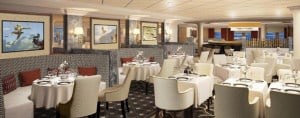
Queen Mary 2 Remastered: Verandah Restaurant

Top 10 Christmas Markets (2018)
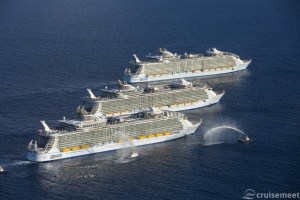
Amazing photos of the three Oasis-class sisters together!

MSC Meraviglia Live Voyage Introduction

Day 9 – La Coruna, Spain

New P&O Iona SkyDome Revealed

What is the Fastest Ship in the World?
Ship transport is among the three main modes of transportation that are useful for large-scale transportation of goods and services around the world. In business, about 75% of goods are transported by ships. Formerly, ships were less popular because of their low speed, but modern ships have advanced, and some move at higher speeds than vehicles.
The fastest ship in the world is HSC Francisco. The ship was officially released in 2013, moving at about 58.2 knots (108.1 km/h). Its passenger capacity is over 950 and can carry over 120 cars.
This High-Speed Catamaran was constructed in Tasmania, Australia, by Incat Shipyard and named after Roman Pontiff Pope Francis.
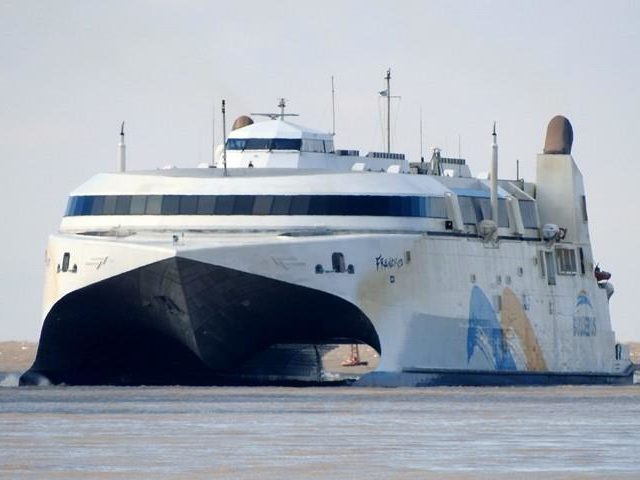
Read on and find out some interesting facts about the fastest ship in the world, its speed, and the factors that determine the rate of a ship.
How Fast is the Fastest Ship in the World?
The fastest ship in the world, HSC Francisco moves at a speed of 58.2 knots (or 58.2 Nautical miles per hour), an equivalent of about 58 mph or 108.1 km/h. The speed is higher than any passenger ship, whose speed ranges between 20 and 30 knots.
Although the maximum speed is extremely high and is a record, performing daily voyages on her route, the maximum speed is much lower. It is very rare when the ferry goes at a speed of more than 45 knots, that is about 52 mph or 83.3 km/h. We wrote about how to convert and how fast is a knot in this article.
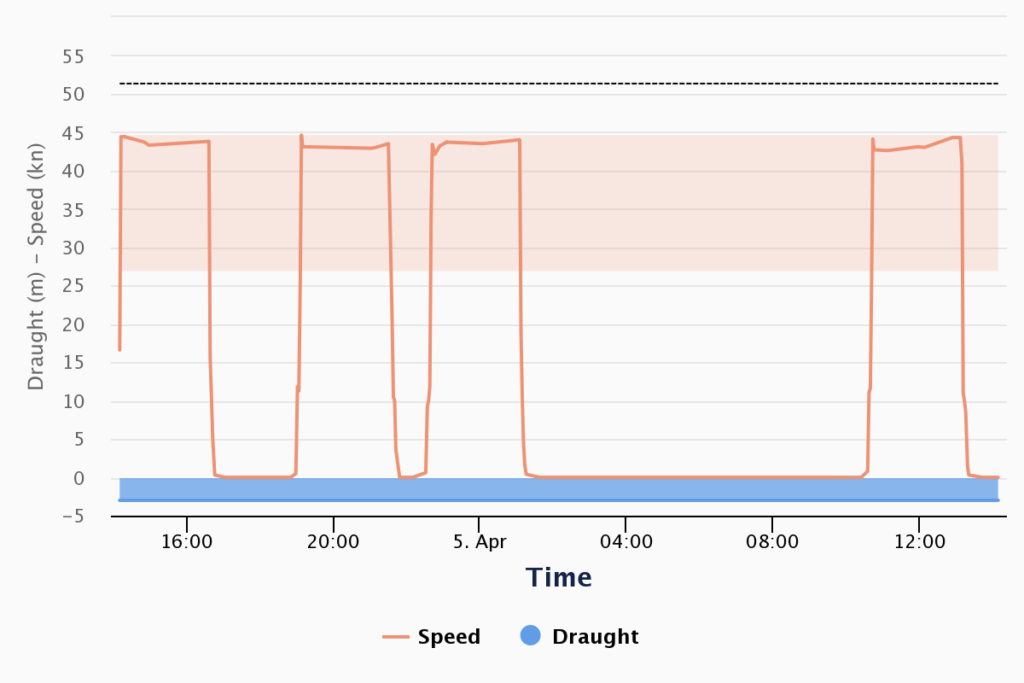
Some features which make HSC Francisco the fastest ship include:
- Two gas turbines propelled by GE energy were designed for marine distillate and liquid natural gas.
- Advanced GE LM2500 water jets capable of controlling high propulsion
- Two tanks for storing the liquid natural gas are enough to supply the ship with energy.
- Four fuel tanks , two on each hull, for a constant supply of energy
- Its engine is fitted with water jets and gas turbines which rotate forward and backward increasing efficiency

The Fastest Naval Ship in the World
The fastest naval ship in the world is the American Zumwalt class destroyer. Zumwalt class destroyer comprises three ships made to destroy missiles. These three ships were built to work concurrently. When one is in the waters, another one is under maintenance while the third one is on the lookout.
Zumwalt class destroyer is operated by an electric system, with over 7000-hertz power and about 5000 turbine generators. This one comes with two propellers that are driven by electric motors and moves the ship at speeds above 42 knots.
Initially, Zumwalt was designed to move at a speed of 80 knots, but the cost of maintaining the high speed was too costly.
What Factors Affect the Speed of a Ship?
Different types of ships move at different speeds depending on their structure, size, and the cargo they transport. Cruise ships have the highest speed of about 24 knots, while bulk carrier ships have the lowest speed among the fleets of about 12 knots.
Factors affecting the speed of a ship include:
- Magnitude & direction of the wind . Wind can propel a ship to move at high speed if the direction of the wind is in line with the moving ship. If the direction of the wind counters that of the moving ship, the ship’s speed decreases.
- Structure of the ship. Some ships have only one propeller while others have more. Those with more propellers move at a higher speed.
- Location of the ship . Ships far away from the shore cruise at higher speeds than those near the shore. As a ship approaches the coast, captains lower the speed to curb emissions from going to the land. Also, the ship’s speeds decelerate when crossing canals for safety.
- Prevailing weather conditions in the sea . Calm weather favors cruising, while turbulent weather obstructs the movement of a ship.
- Draft. The design and size determine the amount of cargo to be loaded onto the ship . A ship with more cargo moves slowly while one with less cargo moves faster.
Do Different Ships Move at the Same Speed?
Different ships can move at different speeds depending on the cargo they carry and their size. Generally, passenger ships move faster than cargo ships. Passenger vessels have to keep to a schedule and are mainly chosen for routes with additional possibilities to sustain bad weather conditions. On the other hand, cargo vessels are utilized to ship cargo at the most economically effective speed and cost.
Here is a table summarizing the common types of sheep and their average speeds.
The largest ships in the world are oil and gas tankers, dry cargo bulkers, and floating liquefied natural gas platforms (FLNG) are also among the slowest in the world’s fleet.
How Do You Ensure Personal Safety While Cruising on High-Speed Ships?
While cruising on high-speed ships, it is important to ensure safety not only for you and your family or colleagues but also for your cargo. People travel by water for different reasons. Some of the reasons include:
- Vacating and breaking away from daily routines individually.
- Lack of alternative means of transport
- Traveling with heavy cargo that needs a lot of space
- View natural phenomena such as the northern lights
Whatever the reason for cruising, the weather is unpredictable. To ensure safety while on a cruise, consider the following safety measures:
- Ensure you have safety equipment such as headgear, shoes, floaters, and gloves
- Avoid any ignition which may cause open fire, especially near flammable goods.
- Carry a first aid kit for dressing minor injuries while cruising.
- Stay away from heavy luggage, especially directly above you, to avoid getting injured if they topple.
- Before using a ladder, ensure it is in good condition and can support your weight.
- Stay away when dangerous cargo like petrol and other flammable goods or poisonous substances are loaded and offloaded.
- Avoid walking on bulk containers and follow instructions from the crew
- Always wear a mask and gloves before touching surfaces to minimize exposure to harmful substances.
- Avoid using electronic gadgets, especially in an area with a poor network connection.
Final Thoughts
At this point, you have learned important information regarding the fastest ship, history, and other ships that cruise at high speeds.
Of course, ships play a crucial role in the transport sector. Most imports and exports are ferried by ships, and technological advancement in the shipping industry is necessary. Also, ships offer the best ways to go vacating and detach from your daily routine. Different scenes we view from cruises are rarely visible from other means of transport.

- Recent Posts
- Report: Yang Ming’s YM Mobility Explosion at Ningbo-Zhoushan Port – August 9, 2024
- Understanding Drillships: Types, Key Features and Advancements – August 1, 2024
- Sustainable and Luxurious: Discovering Split’s Yachting Paradise – April 26, 2024
About the author
I worked as an officer in the deck department on various types of vessels, including oil and chemical tankers, LPG carriers, and even reefer and TSHD in the early years. Currently employed as Marine Surveyor carrying cargo, draft, bunker, and warranty survey.
Leave a Reply Cancel reply
Your email address will not be published. Required fields are marked *
Save my name, email, and website in this browser for the next time I comment.
Latest posts
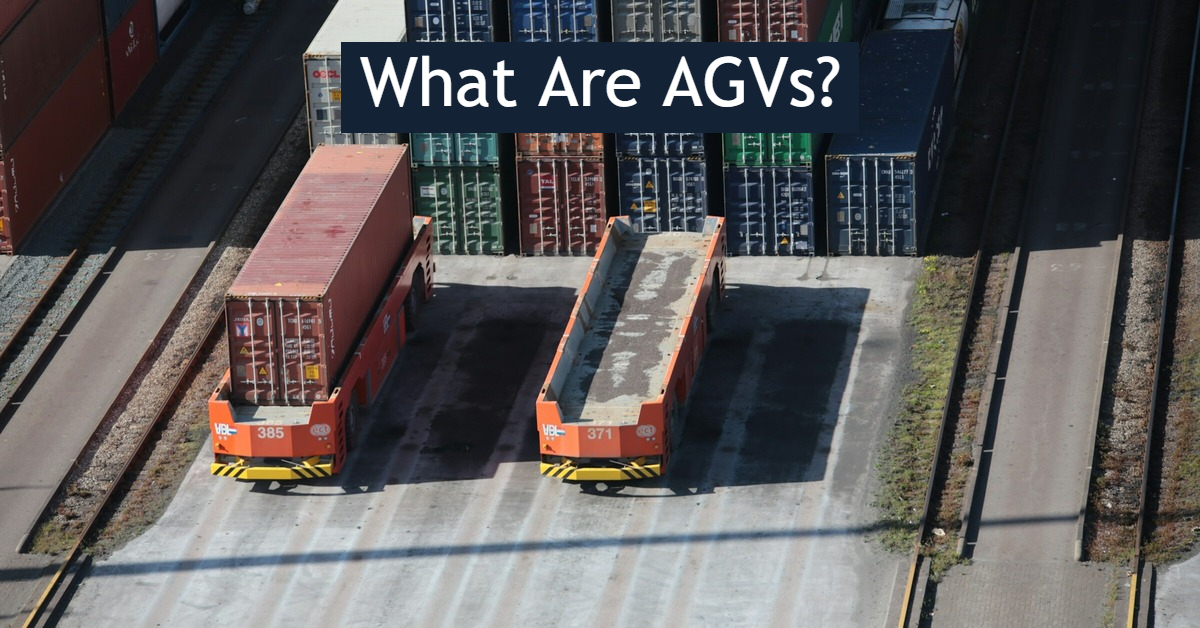
What Are AGVs? Automation Becoming Increasingly Common in Seaports
What are AGVs? Automated guided vehicles can minimize the troubles of manual operations and enhance seaport operations.
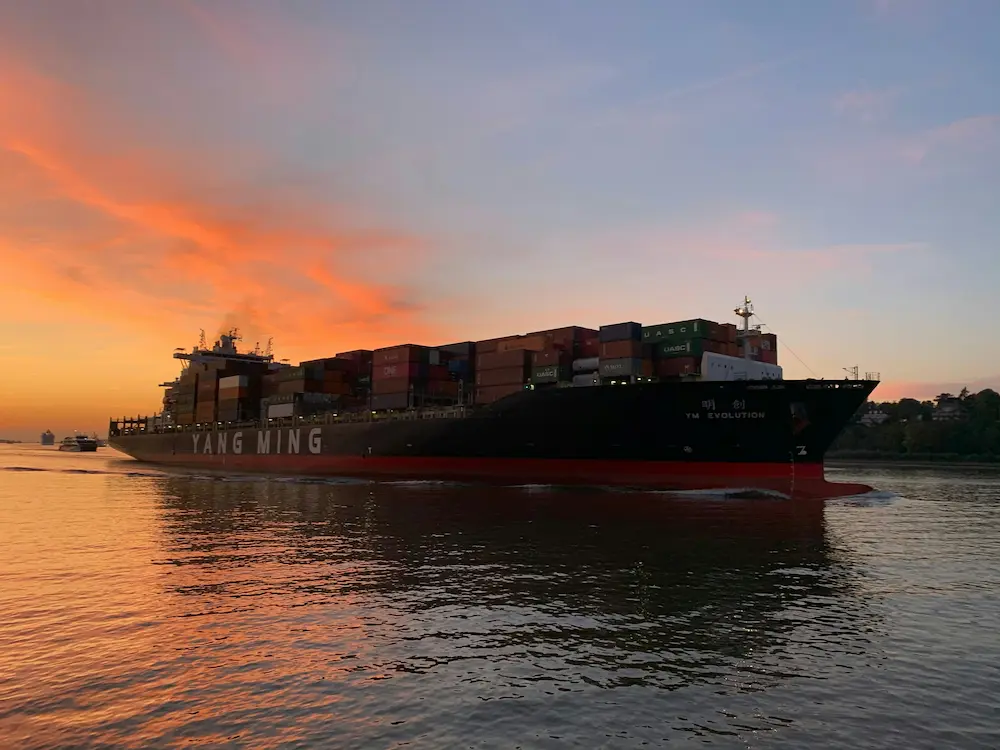
Report: Yang Ming’s YM Mobility Explosion at Ningbo-Zhoushan Port
A massive explosion occurred on the container ship YM Mobility while it was berthed at the Ningbo-Zhoushan Port in China
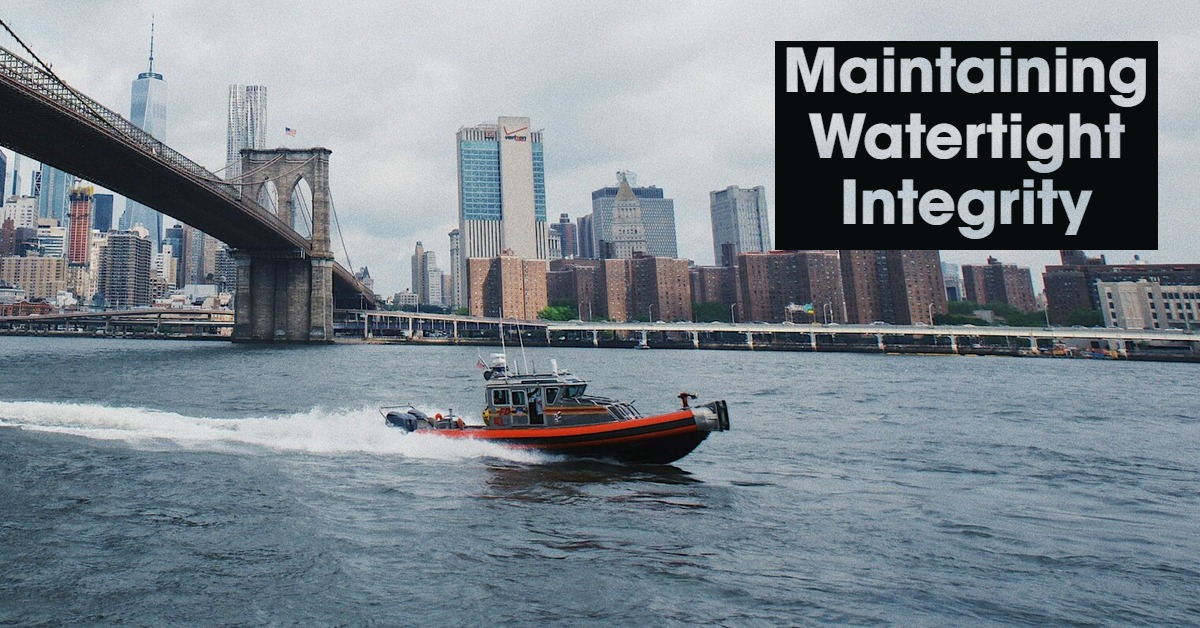
Maintaining Watertight Integrity on Boat Hatches
Good watertight integrity on boat hatches is paramount to keeping the ship afloat and minimizing damage at all costs.
- Favorites & Watchlist Find a Cruise Cruise Deals Cruise Ships Destinations Manage My Cruise FAQ Perfect Day at CocoCay Weekend Cruises Crown & Anchor Society Cruising Guides Gift Cards Contact Us Royal Caribbean Group
- Back to Main Menu
- Search Cruises " id="rciHeaderSideNavSubmenu-2-1" class="headerSidenav__link" href="/cruises" target="_self"> Search Cruises
- Cruise Deals
- Weekend Cruises
- Last Minute Cruises
- Family Cruises
- 2024-2025 Cruises
- All Cruise Ships " id="rciHeaderSideNavSubmenu-4-1" class="headerSidenav__link" href="/cruise-ships" target="_self"> All Cruise Ships
- Cruise Dining
- Onboard Activities
- Cruise Rooms
- The Cruise Experience
- All Cruise Destinations " id="rciHeaderSideNavSubmenu-5-1" class="headerSidenav__link" href="/cruise-destinations" target="_self"> All Cruise Destinations
- Cruise Ports
- Shore Excursions
- Perfect Day at CocoCay
- Caribbean Cruises
- Bahamas Cruises
- Alaska Cruises
- European Cruises
- Mediterranean Cruises
- Royal Destinations
- Cruise Planner
- Make a Payment
- Check-In for My Cruise
- Beverage Packages
- Shore Excursions
- Book a Flight
- Dining Packages
- Royal Gifts
- Required Travel Documents
- Transportation
- Book a Hotel
- Redeem Cruise Credit
- All FAQs " id="rciHeaderSideNavSubmenu-7-1" class="headerSidenav__link" href="/faq" target="_self"> All FAQs
- Boarding Requirements
- Future Cruise Credit
- Travel Documents
- Check-in & Boarding Pass
- Transportation
- Perfect Day at CocoCay
- Post-Cruise Inquiries
- Royal Caribbean
- Celebrity Cruises

THE FASTEST INTERNET AT SEA
Royal Caribbean VOOM, the fastest internet at sea, is now available on every Royal Caribbean ship. With six times faster onboard WiFi speed than you’ll find on any other cruise ships in the world, the internet connectivity is unlike anything you’re ever experienced on a cruise ship.

SHARE THE JOY
Stay connected with friends and family all cruise long with 24 hour access. The VOOM Surf + Stream Internet Package lets you message and video chat on messenger services, browse the web, send emails and post on social media, and video chat live. Plus stream your favorite videos, movies, music and shows.
PURCHASE VOOM SURF + STREAM INTERNET PACKAGE
YOUR CONNECTIVITY HIGH SPEED IN YOUR HANDS
Whether it’s checking your emails, browsing the web, or streaming your favorite shows, music, and movies directly to your device, amp up your cruise experience with our VOOM Surf + Stream Voyage Package. You’ll also get to share the adventure in real-time on social media and video calls. Packages are available for up to four devices.
Reserve a Package Now
Prices are per device estimates and will vary.
vOOm surf & stream
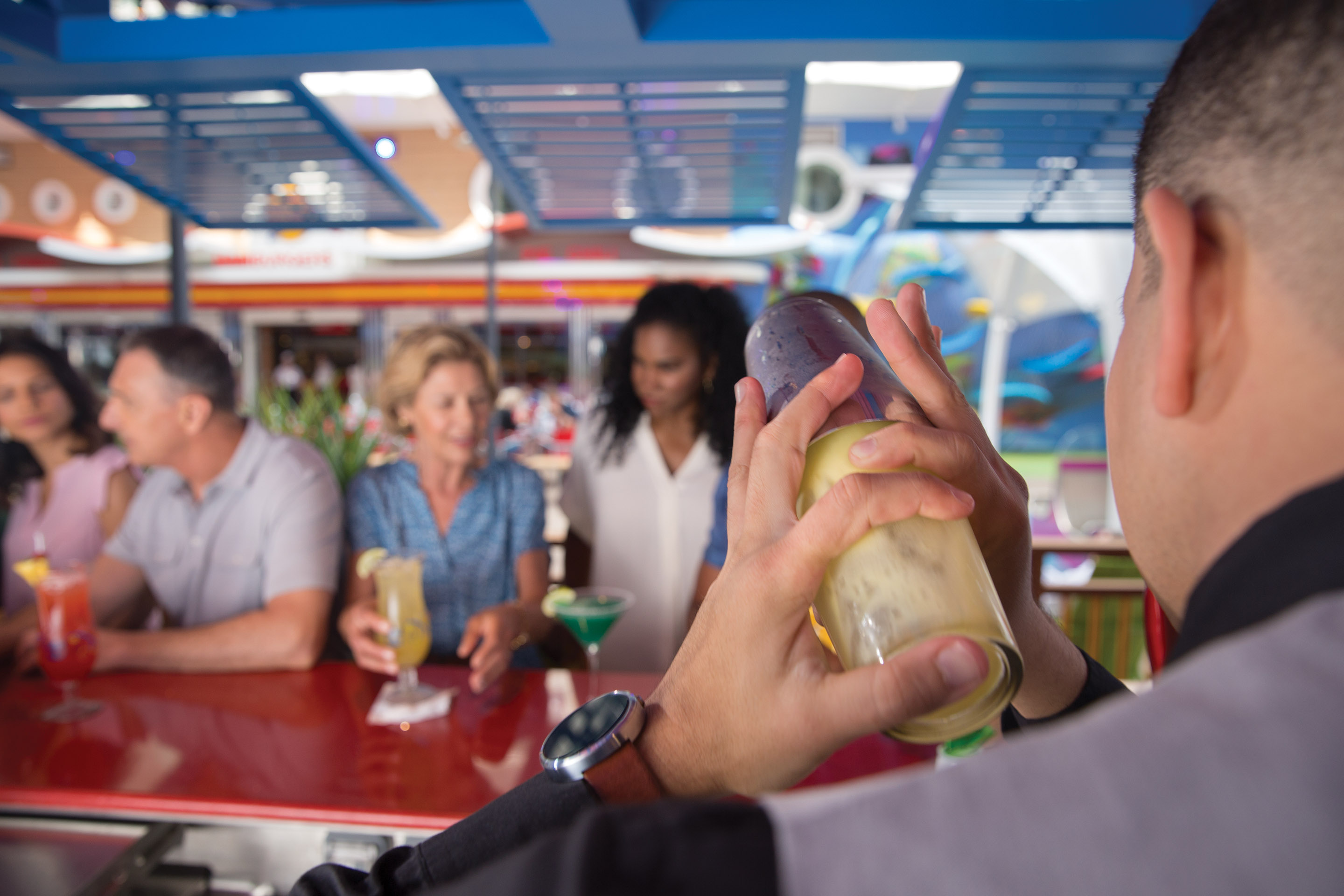
WHAT IS ROYAL CARIBBEAN BEVERAGE DRINK PACKAGE?
Quench your thirst onboard with a beverage package that gets you the best value on your favorite drinks, from Coca-Cola® to fine wine, premium and frozen cocktails to a full selection of beers, fruit juices to Evian® water.
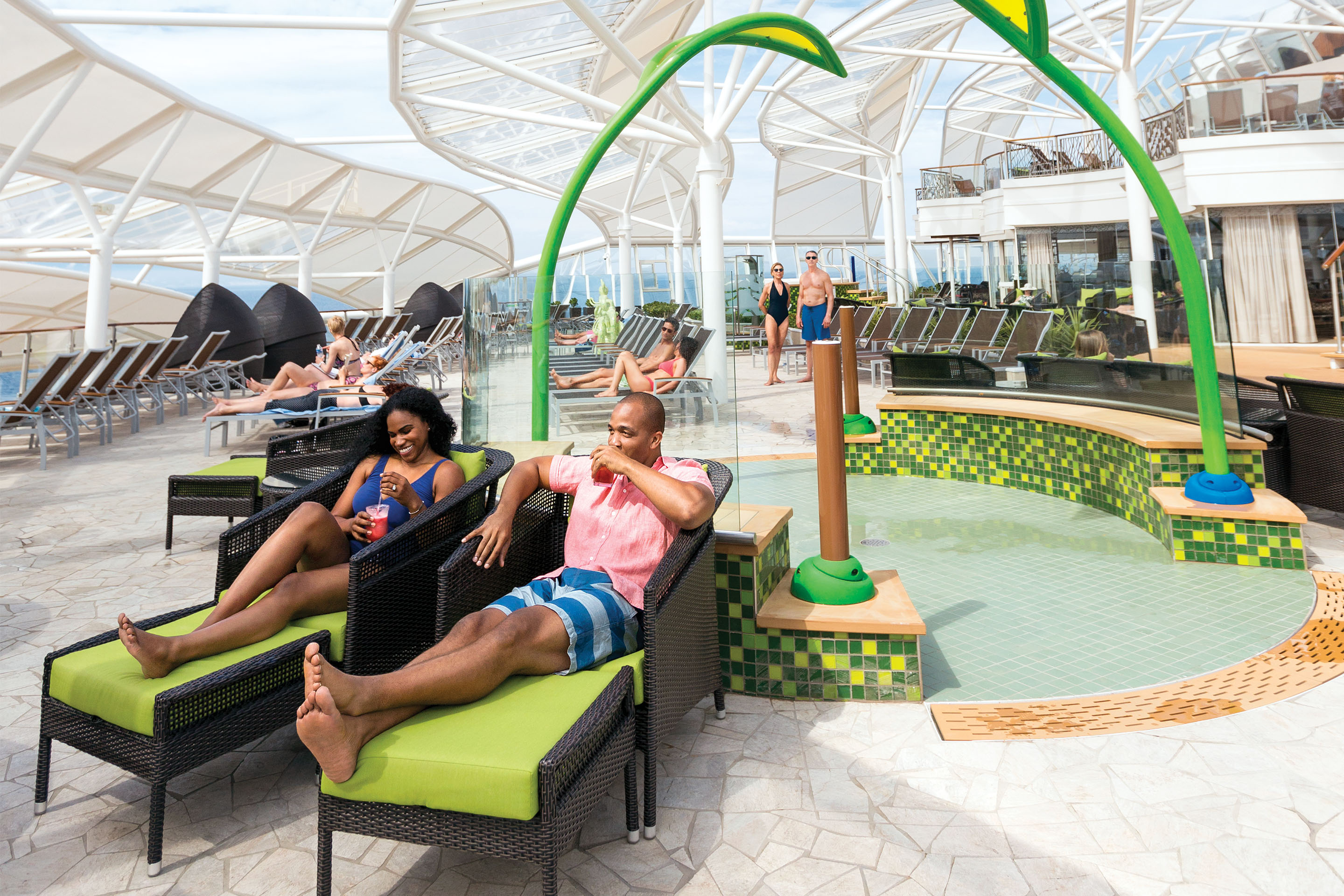
Guide To An All-Inclusive Cruise
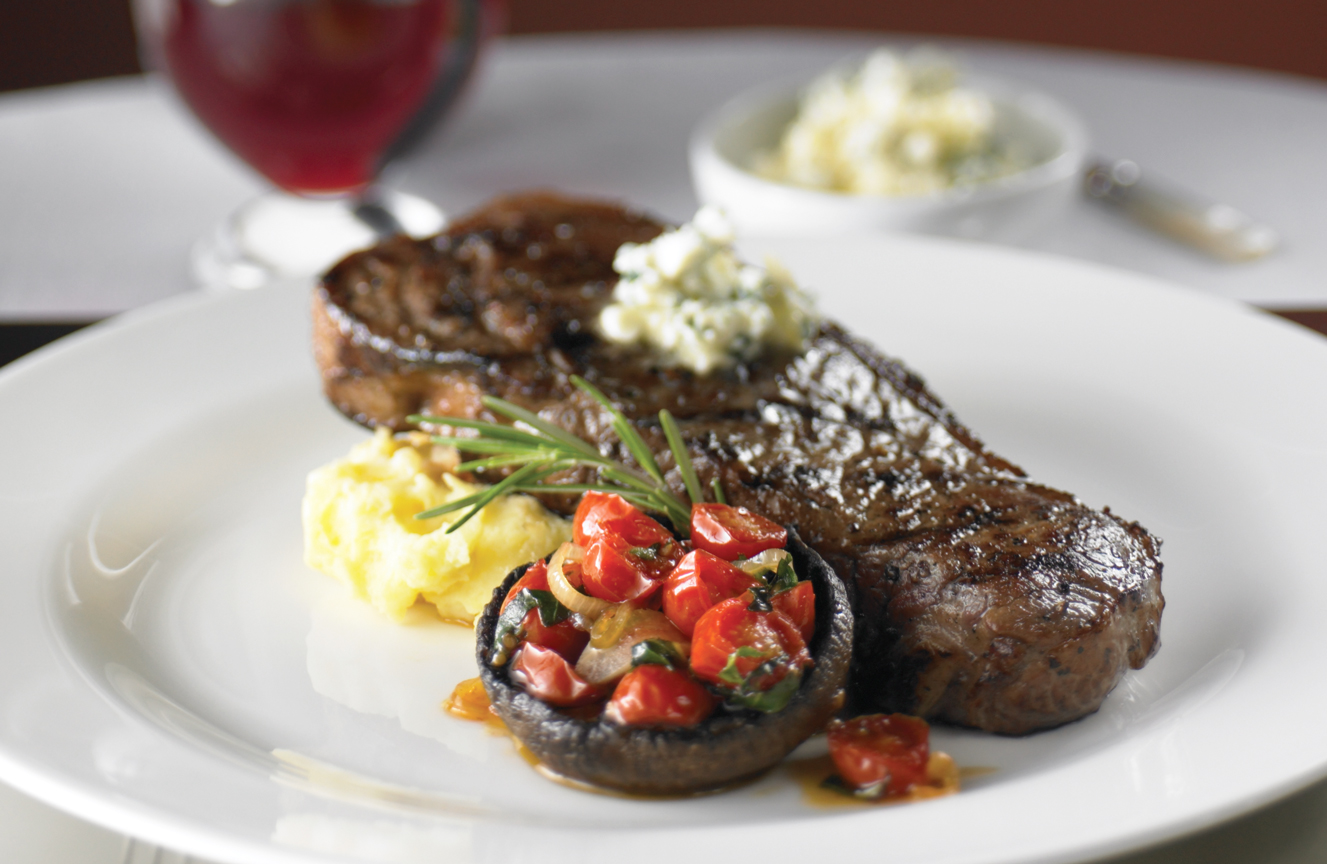
Ultimate Dining Guide On Your Cruise
More ways to enrich your cruise .
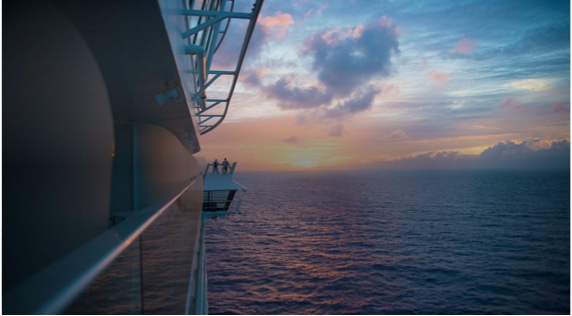
Previewing: Promo Dashboard Campaigns
My Personas
Code: ∅.
JavaScript is disabled. Please enable.
Miyajima — Hiroshima Schedule and Price List
- Discounted Fares
- Steps to Take Before Boarding
- Ship Facilities, etc.
- Recommendations
- Information on Boarding Sites
■Please click here for the 2023-2024 year-end and new-year timetable.
Schedule *As of November 29, 2022
Regular schedule.
△→ Service only available on weekends and national holidays. However, there is no service on weekends and national holidays between December and February. *→ Sails to Hiroshima Port via Prince Hotel Port. ■ The ticket counter is some distance away from the boarding site. Please allow enough time to check in. ■ Cruise distance [Hiroshima — Prince Hotel 2.62km][Prince Hotel — Miyajima 15.05km] [Hiroshima — Miyajima 15.19km]
Price List *As of November 29, 2022
Passenger fare: one way per person (tax incl.) *april 1, 2023 revision of fares.
■ Junior high school students and older are charged the adult fare. The fare for children refers to elementary school children. ■ Infants (under age 1 year) are free. One preschool child (toddler) per adult sails for free. If an adult sails with more than 1 preschool child, each additional preschooler will be charged the children’s fare. ■ Passengers sailing round trip should purchase the “ 1-day Unlimited Pass ” (Adults 3,800 yen/Children 1,950 yen). One-day free pass includes 100 yen Miyajima visitator tax.
■Starting from October 1, 2023, an additional fee of 100 yen will be required for visiting Miyajima.For more details, please visit the website of Hatsukaichi City .
Passenger Fare: One way per person (tax incl.)
*The fare is after April 1, 2023.
■ Junior high school students and older are charged the adult fare. The fare for children refers to elementary school children. ■ Infants (under age 1 year) are free. One preschool child (toddler) per adult sails for free. If an adult sails with more than 1 preschool child, each additional preschooler will be charged the children’s fare. ■ Passengers sailing round trip should purchase the “ 1-day Unlimited Pass ” (Adults 3,400 yen/Children 1,700 yen).
Discounted Fares *As of November 29, 2022
Discounted fares: one way per person (tax incl.).
■ Reservations must be made in advance for groups of 15 persons or more. ■ The discount rate differs if an extra vessel is needed, so please inquire. ■Starting from October 1, 2023, an additional fee of 100 yen will be required for visiting Miyajima.For more details, please visit the website of Hatsukaichi City .
Steps to Take Before Boarding *As of November 29, 2022
Step 1 reservations (up to 17:00 the day before).
Please make a reservation by telephone. Persons without a reservation may board on the day of passage on a first-come, first-served basis.
STEP 2 Check-in Procedure (on the day of passage)
■ Persons who have purchased a voucher, etc. in advance must also check in. ■ Check-in begins 30 min. prior to departure. Please complete the check-in procedure at least 5 min. before departure.
STEP 3 Payment (on the day of passage)
Hiroshima Port Please pay at the counter on the day of passage. Payments cannot be made in advance. *Only cash is accepted at the ticket counter.
■ Prince Hotel Port On the day of passage, please pay at the Setonaikaikisen Travel Service counter next to the front desk.
Miyajima Port Only cash is accepted since Miyajima Port does not have a ticket machine. Please pay at the counter on the day of passage.
Setouchi Sea Line Head Office<
Setouchi Sea Line Miyajima Port
Ship Facilities, etc. *As of November 29, 2022
Persons using a wheelchair.
Information on boarding gangways for each port, onboard dimensions, and cruise ferry elevators are provided. Please check the details below before boarding.
Carry-on Baggage
■ Carry-on baggage is limited to items with length, width, and height totaling a maximum of 2m and weighing a maximum of 30kg. Each passenger is allowed up to 2 carry-ons. No fee is charged. ■ Bicycles are only allowed if they can be folded up and placed in a bicycle bag. ■ Small animals are treated as carry-on baggage. Passengers traveling with an animal must read the information below.
Recommendations *As of November 29, 2022
1-day unlimited pass.
This pass offers unlimited 1-day sailing for all Setouchi Sea Line cruise routes operating in Hiroshima Bay! Enjoy visiting Hiroshima, Miyajima, Etajima, and Kure.
Information on Boarding Sites *As of November 29, 2022
Hiroshima port information, detailed information on hiroshima port, boarding site.
- High-speed ships to Miyajima depart from the No. 6 jetty in front of the terminal.
Nearby parking areas
Miyajima port information, detailed information on miyajima port.
- The ships sailing to Hiroshima/Prince Hotel depart from the No. 6 jetty on the No. 3 pier. *Please note the boarding site for ferries going to Miyajimaguchi is different.
Starlink on cruise ships: Which lines have faster internet connections on board?
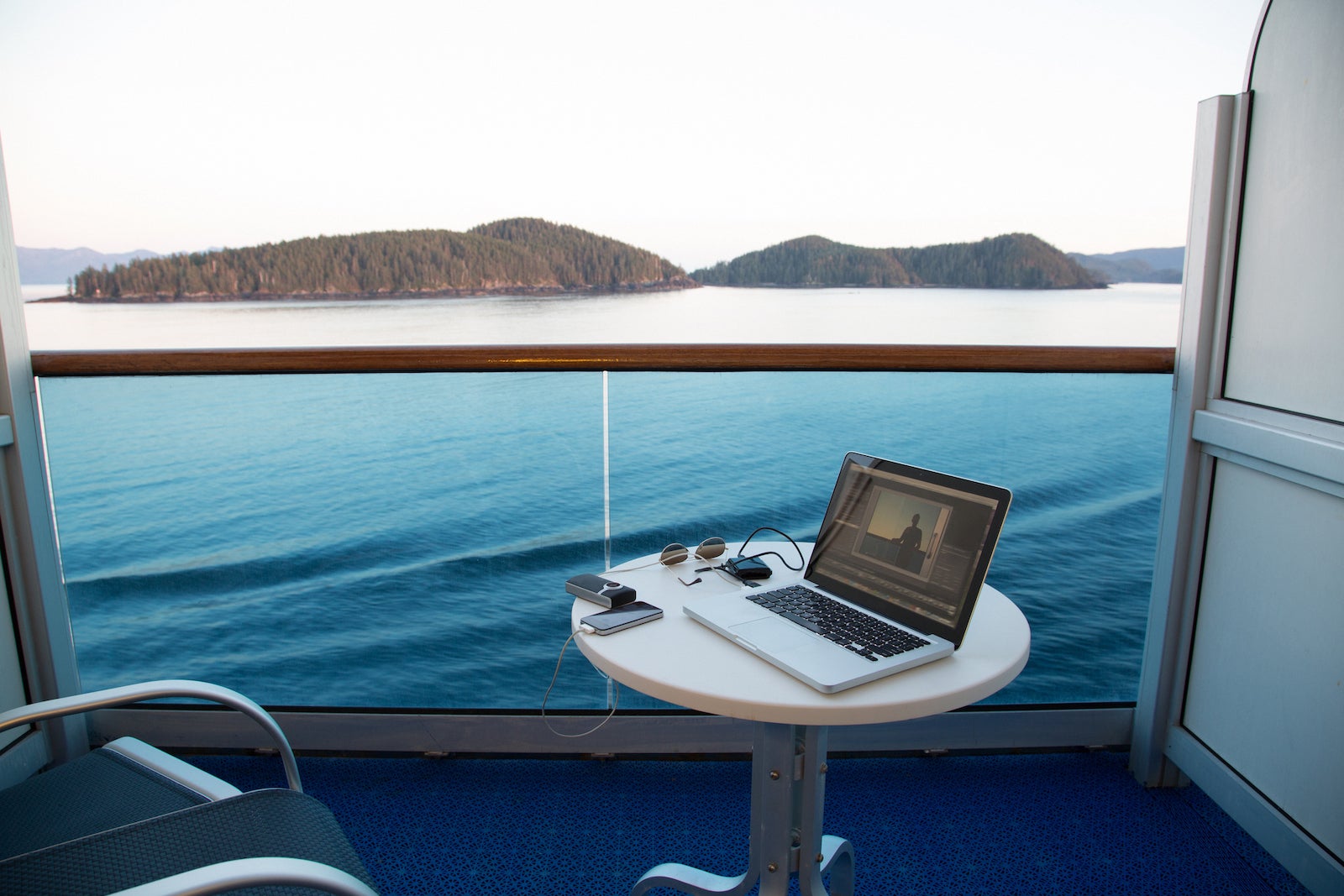
No matter how far your cruise roams, staying connected to the internet can be as important for some cruisers as oxygen and water. Whether you're keen on live-streaming penguins from your balcony on an Antarctica cruise, catching up on your favorite TV series or hopping on a Zoom call in the middle of the Pacific, connectivity and high-speed access are now considered essentials when cruising.
In the past, cruise lines struggled to keep up with the demand for seamless connectivity at sea. In the middle of an ocean, ships had to rely on satellite systems that could be unreliable, prohibitively expensive and maddeningly slow. Satellite systems allotted only so much broadband for each ship, and every ship carried thousands of people, each with multiple devices.
For cruise news, reviews and tips, sign up for TPG's cruise newsletter .
A better solution was required. Enter Starlink, the world's first and largest satellite constellation using a low Earth orbit to deliver broadband internet. Part of Elon Musk's SpaceX program, Starlink now provides many cruise ships with bandwidth that can support streaming, online gaming, video calls and more worldwide. Starlink debuted in 2019 and has quickly revolutionized how hundreds of cruise ships provide internet access, boosting connectivity and capacity as ships roam the world.
Will your next cruise offer landlike Wi-Fi speeds? Here is everything you need to know about Starlink on cruise ships.
How does Starlink work?
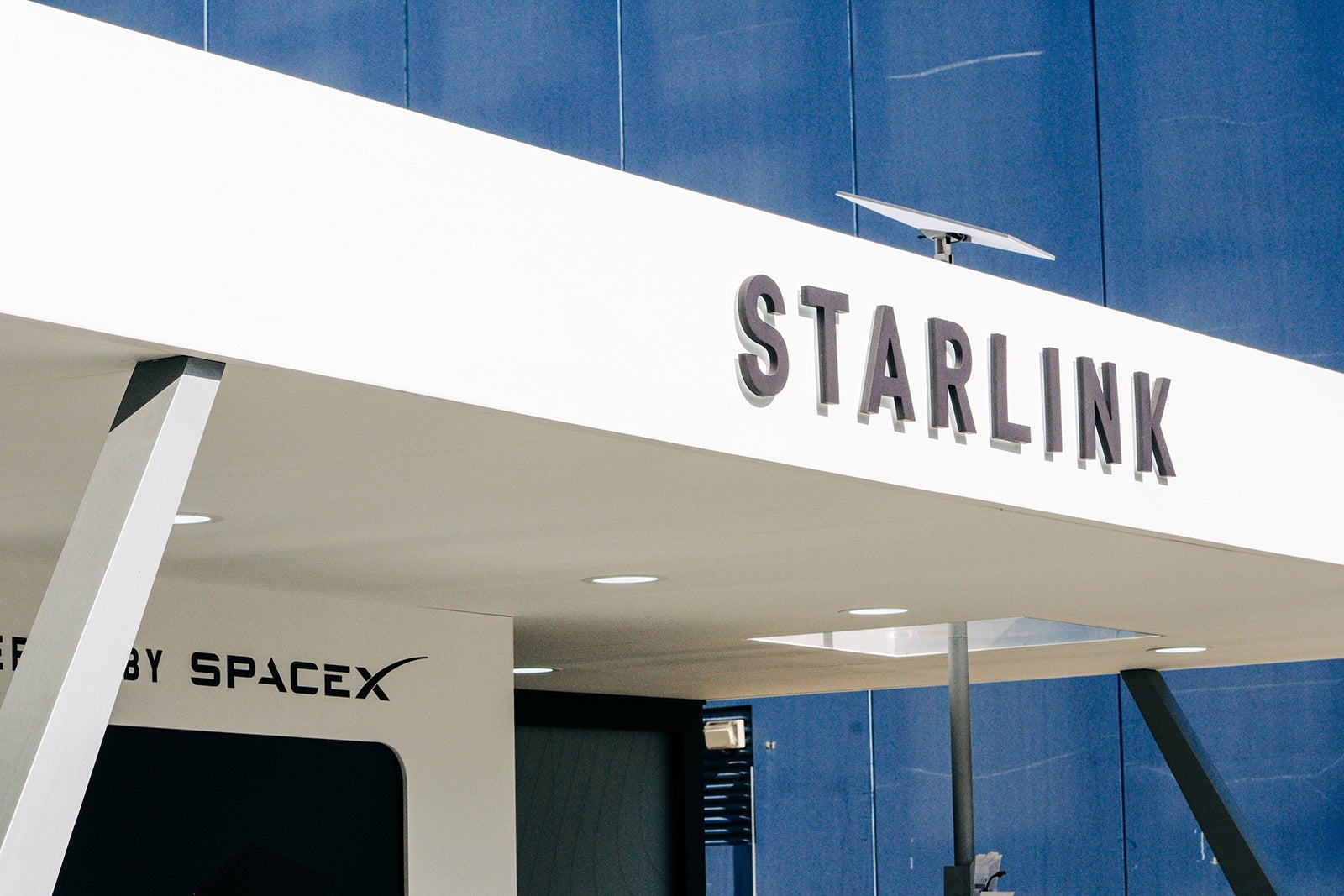
Compared to standard communications satellites, which orbit from 22,000 miles away, Starlink's thousands of satellites orbit the atmosphere from about 340 miles above the Earth's surface. With much closer proximity to Earth, Starlink's data connections offer stronger and faster connections and provide the opportunity for more bandwidth on cruise ships.
The coverage of the Starlink satellites is extensive and growing, with more than 5,400 satellites currently in orbit and plans in future years to reach up to 42,000 satellites in orbit at once. Traditional satellite networks have a much more limited fleet and reach, especially in some of the ocean's most remote areas. Starlink is the world's largest satellite constellation, with near-complete coverage of all the world's oceans and waterways.
The Starlink system is affixed to ships as a series of flat panels positioned on upper decks, replacing the now antiquated domes often placed near the ship's funnel and radar masts.
Related: Wi-Fi on cruise ships: 5 things to know about internet use on board
How fast is Starlink internet access?
Starlink's website estimates download speeds that range from 40 to over 200 Mbps and upload speeds that come in at 8 to more than 25 Mbps, with a latency of less than 99 milliseconds. These are wide-ranging estimates that don't factor in cruise ship-based throttling, cruise ship capacity, global positioning and the costs and challenges of outfitting a cruise ship with bow-to-stern Wi-Fi connectivity.
The industrial-strength steel frames and fireproof materials used throughout the ship make a strong, consistent signal throughout a cruise ship an industry-wide challenge. There will be patches on a ship, regardless of which line you're sailing, where you'll find a weaker signal. Signals are often at their strongest in the main public gathering areas.
Similar to traditional satellites, severe weather can be a factor in Starlink connections while at sea. Intense storms can bring temporary service interruptions or reduced speeds, while heavy rain or snowfall can cause signal attenuation, which might cause a brief loss of connectivity.
Cruises with Starlink
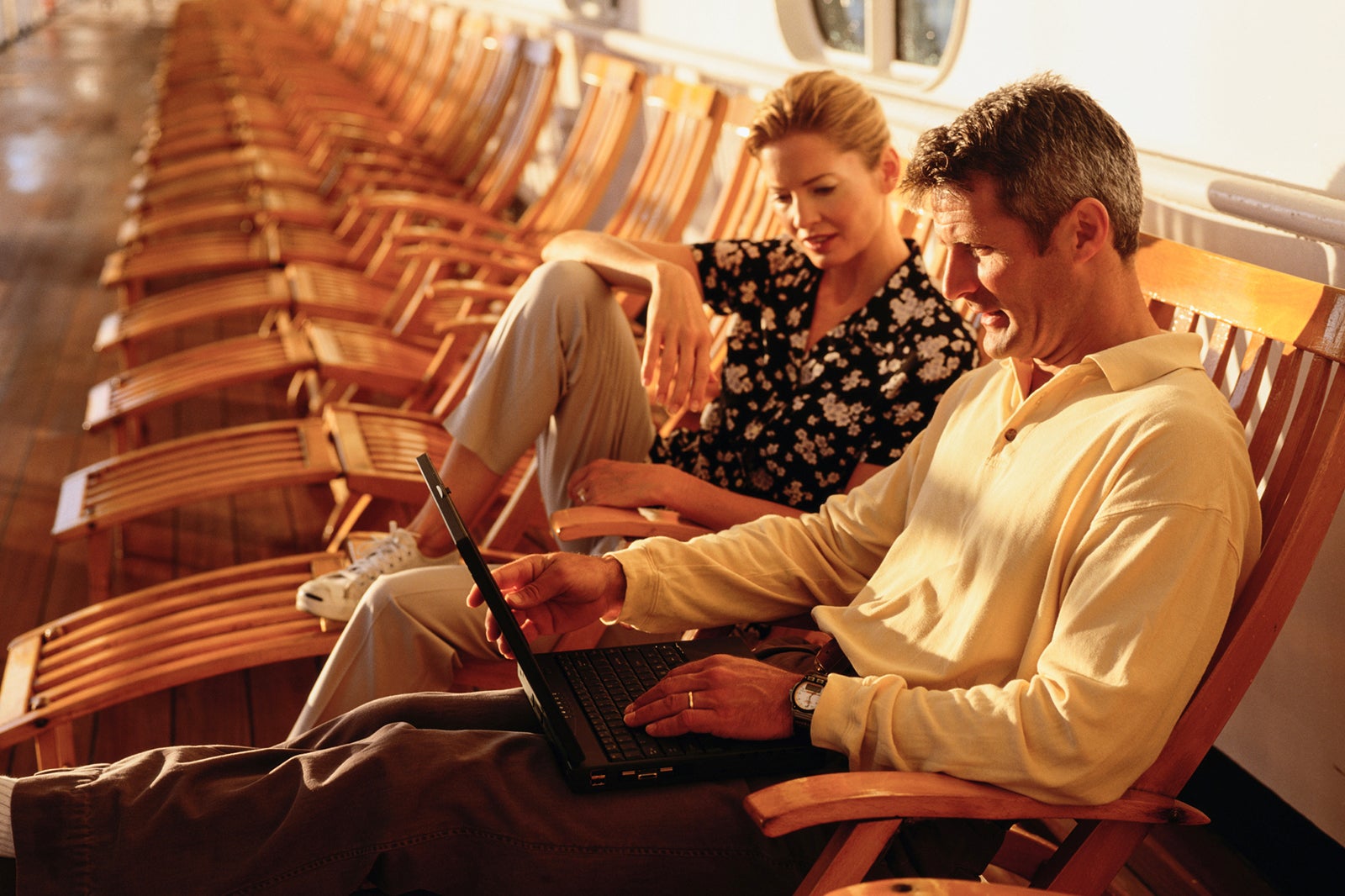
Here's a full rundown of all the major cruise lines sailing with the new Starlink technology. How much will the connectivity cost you? Check TPG's guide to Wi-Fi access on cruise ships.
Note: Starlink on cruises can be a white label service, depending on the line. While the cruise line might not advertise that it uses the new Wi-Fi technology, the list below will help to identify which lines are sailing with Starlink.
Azamara 's fleet features Starlink Wi-Fi at an additional cost. There is one level of bandwidth available.
Carnival Cruise Line
Carnival Cruise Line 's entire fleet features Starlink Wi-Fi at an additional cost. There are three levels of bandwidth available: Social Wi-Fi (with access only to popular social media and airline websites), Value Wi-Fi (for email, news, weather, banking and other basic websites) and Premium Wi-Fi (for streaming and high-bandwidth usage).
Celebrity Cruises
Celebrity Cruises ' entire fleet features Starlink Wi-Fi at an additional cost. There are two levels of bandwidth available: Basic Wi-Fi (for social media, email, web browsing and internet-based messaging) and Premium Wi-Fi (for streaming and high-bandwidth usage).
Cunard 's entire fleet features Starlink Wi-Fi at an additional cost. There are two levels of bandwidth available: Essential (for social media, email, web browsing and internet-based messaging) and Premium (for streaming and high-bandwidth usage).
Disney Cruise Line
Disney Cruise Line does not currently use Starlink Wi-Fi.
Holland America
Holland America offers fleetwide Starlink Wi-Fi. There are three levels of bandwidth available: Surf (for social media, email, web browsing and internet-based messaging), Premium (for Wi-Fi audio and video calls) and Stream (for streaming and high-bandwidth usage).
Lindblad Expeditions-National Geographic
Lindblad Expedition offers complimentary, basic Starlink Wi-Fi to all guests aboard their ships, with the exception of Delfin II. There are two levels of bandwidth available for purchase: Enhanced (for social media, email, web browsing and internet-based messaging) and Premium (for streaming and high-bandwidth usage).
MSC Cruises
MSC Cruises is currently rolling out Starlink throughout its fleet, with two-thirds of the line's ships currently sailing with the upgraded service. The ships in the fleet that do not have the service include MSC Opera and MSC World Europa (both will receive Starlink in the coming weeks) and MSC Armonia, MSC Bellissima, MSC Musica, MSC Sinfonia and MSC Splendida (scheduled to receive Starlink before the summer 2024 season.)
There are two levels of bandwidth available for purchase: the Browse Internet Cruise Package (for social media, email, web browsing and internet-based messaging) and the Browse & Stream Cruise Package (for streaming and high-bandwidth usage).
Norwegian Cruise Line
Norwegian Cruise Line is currently rolling out Starlink throughout its fleet this year, with select ships presently sailing with the upgraded service. Currently, the ships with upgraded internet include Norwegian Viva, Norwegian Prima, Norwegian Encore, Norwegian Getaway, Norwegian Breakaway, Norwegian Epic and Norwegian Pearl.
NCL offers two levels of bandwidth available for purchase: the Unlimited Wi-Fi Package and the Unlimited Premium Wi-Fi Package. As part of the line's Free at Sea promotion , guests can receive a limited number of Wi-Fi minutes for free.
Oceania Cruises
Oceania Cruises is rolling out Starlink Wi-Fi on all its ships and will have its entire fleet outfitted with the service by the end of 2024. Oceania Cruises offers fleetwide basic complimentary internet with a premium option available for streaming.
Princess Cruises
Princess Cruises ' fleet features MedallionNet, the only Wi-Fi network in the cruise industry that combines multi-orbit satellites — Geostationary Earth Orbit (GEO), Mid-Earth Orbit (MEO) and Low Earth Orbit (LEO/Starlink) with 5G terrestrial networks to deliver a strong connection regardless of ship location. There is one level of bandwidth available.
Regent Seven Seas Cruises
Starlink Wi-Fi can currently be found on two Regent Seven Seas ships, Seven Seas Mariner and Seven Seas Grandeur. The entire Regent Seven Seas fleet will be equipped with Starlink Wi-Fi by the end of 2024. There are two levels of bandwidth available on Regent Seven Seas: A complimentary basic package for emails and news and an upgraded package for streaming services and high-bandwidth usage that's available for a fee.
Royal Caribbean
Royal Caribbean 's entire fleet features Starlink Wi-Fi at an additional cost. There is one level of bandwidth available.
Seabourn offers fleetwide complimentary Starlink Wi-Fi. There is one level of bandwidth available.
Silversea Cruises
Silversea Cruises ' entire fleet features Starlink Wi-Fi. There are two levels of bandwidth available: Standard Internet (for social media, email, web browsing and internet-based messaging) and Premium Internet (for streaming and high-bandwidth usage). Your suite and ship class determine which option you receive at no extra charge. Upgrades in service are available for an additional fee.
Viking 's entire fleet features Starlink Wi-Fi at no additional cost. There is one level of bandwidth, though the line advises users that it can limit heavy-bandwidth usage to ensure all have equal access.
Virgin Voyages
Virgin Voyages ' entire fleet features Starlink Wi-Fi at no additional cost. The included plan allows for social media, email, web browsing and internet-based messaging. There is an upgraded Premium bandwidth option available for streaming and high-bandwidth usage for an additional fee.
Planning a cruise? Start with these stories:
- The 5 most desirable cabin locations on any cruise ship
- A beginners guide to picking a cruise line
- The 8 worst cabin locations on any cruise ship
- The ultimate guide to what to pack for a cruise
- A quick guide to the most popular cruise lines
- 21 tips and tricks that will make your cruise go smoothly
- Top ways cruisers waste money
- The ultimate guide to choosing a cruise ship cabin
- Port Overview
- Transportation to the Port
- Uber & Lyft to the Port
- Dropping Off at the Port
- Cruise Parking
- Cruise Hotels
- Hotels with Parking Deals
- Uber & Lyft to the Ports
- Things to Do
- Cozumel Taxi Rates
- Free Things to Do
- Restaurants Near the Cruise Port
- Hotels & Resorts With Day Passes
- Closest Beaches to the Cruise Port
- Tips For Visiting
- Shore Excursions
- Cruise Parking Discounts
- Hotels with Shuttles
- Which Airport Should I Use?
- Transportation to the Ports
- Dropping Off at the Ports
- Fort Lauderdale Airport to Miami
- Inexpensive Hotels
- Hotels near the Port
- Hotels With Shuttles
- Budget Hotels
- Carnival Tips
- Drink Packages
- Specialty Restaurants
- Faster to the Fun
- More Articles
- CocoCay Tips
- Norwegian Tips
- Great Stirrup Cay
- Harvest Caye
- How to Get the Best Cruise Deal
- Best Time to Book a Cruise
- Best Websites to Book a Cruise
- Cruises Under $300
- Cruises Under $500
- Spring Break Cruise Deals
- Summer Cruise Deals
- Alaskan Cruise Deals
- 107 Cruise Secrets & Tips
- Tips for First-Time Cruisers
- What to Pack for a Cruise
- What to Pack (Alaska)
- Packing Checklist
- Cruising with Kids
- Passports & Birth Certificates
- Bringing Alcohol
- Cruising with a Disability
- Duty-Free Shopping
- Cruise Travel Insurance
- Things to Do on a Cruise Ship
- What Not to Do on a Ship
- News & Articles

Reviewed: Royal Caribbean VOOM Internet at Sea (Speed, Features, and More)
Royal Caribbean’s VOOM Internet service is billed as “The Fastest Internet at Sea.” That’s good news because gone are the days where having Internet service was considered a luxury. Today, it’s a necessity. And even if you want to disconnect while on a cruise (which is a good idea) there are still times where you’ll want access to hop online.
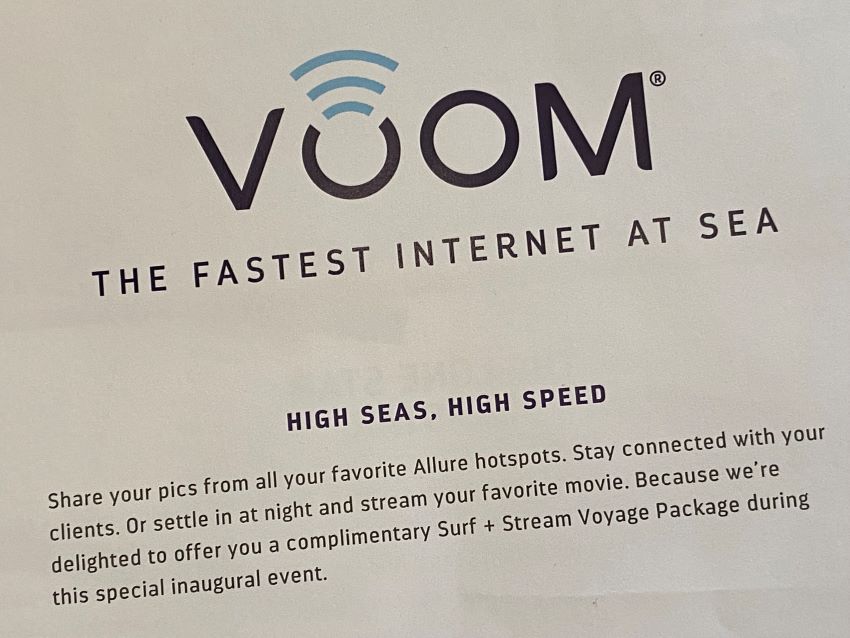
Whether it’s checking in for a flight, sending a quick email back home, or checking in with work while you are sitting on the balcony, there is no shortage of reasons you might need access. As the public becomes more dependent on Internet access, cruise lines have made real strides to offer online access to their guests.
If you’re taking a cruise, then you might be wondering exactly how the service works, how fast it really is, and how much it costs. Having sailed the line countless times, here’s what we can tell you…
In This Article...
Price of Royal Caribbean’s VOOM Internet Service
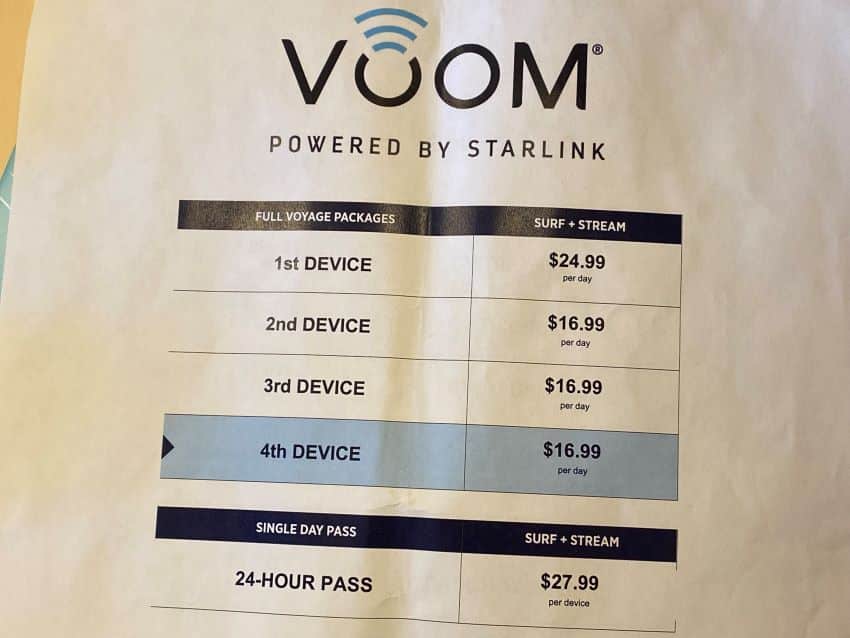
First things first, if you are planning to get online during your cruise, then expect to fork over some considerable money.
While we appreciate the complexities that are involved in accessing the Internet from the middle of the ocean aboard the ship, the price of the VOOM service is still considerably more than you would pay for service on land.
While rates may vary based on your specific cruise, expect to pay $20-25 per device , per day. We can’t tell you exactly what you’ll pay because Royal Caribbean often changes prices depending on the specific trip. As well, there are often discounts that can factor in as well.
For instance, on a recent cruise, we saw a price of $25 per day for the first device and $17 per day for additional connections. This assumes you bought a package for the full length of the trip. Booking wi-fi before the cruise, we paid around $17 for the first device.
What if you just want to hop online for a single day or just for a few minutes to check email? There are time blocks available for purchase, as well as a daily rate that is higher than the multi-day package rate. In this case, it was $28 for a 24-hour pass.
Remember: For the biggest savings you can pre-purchase an Internet package through the Royal Caribbean Cruise Planner. The cruise line usually offers a discounted rate on Internet packages if booked ahead of time. We’ve seen this often at 10-25% off the onboard rate.
Signing Up/ Logging In to Access the Internet

The sign-up process for Royal Caribbean’s VOOM service is relatively simple. First, passengers enable wi-fi on their device and then select the ship’s service from the list of available connections.
Then, you will open up a new browser window. If you don’t see a login prompt to connect, then simply open a window and go to “Login.com”. From there, it should walk you through the steps to sign up for access, including creating a username and PIN.
You should continue to have access to the Internet throughout the rest of the trip, but if the connection drops or you disconnect, then simply make sure you are connected to the Wi-Fi network and then visit “Login.com” again to sign-in.
During our trip, it seemed to help if we accessed the login page via a new private window, which cleared out any prior cookies from our browser.
If you have trouble accessing the Internet, there is a help-desk available on the ship.
Testing the Speed of Royal Caribbean’s VOOM Service
How fast is Royal Caribbean’s Internet? Following a recent upgrade to SpaceX’s Starlink service, it appears that speeds have improved dramatically .
Before Starlink, we commonly encountered speeds of 3-5 Mbps on the ship for its then fastest connection. For reference, many home broadband connections range between 20-100 Mbps (you can test your current connection speed here .)
And after the initial rollout of Starlink, we found similar speeds as well, leaving us unimpressed with the hype about the service. However, it seems those low speeds were an aberration.
Taking a cruise in late 2023 — well after the full rollout of Starlink across the fleet — the speeds were blazing. We frequently tested the VOOM speed and consistently reached 40-60 Mbps, making it just as fast as our home internet.
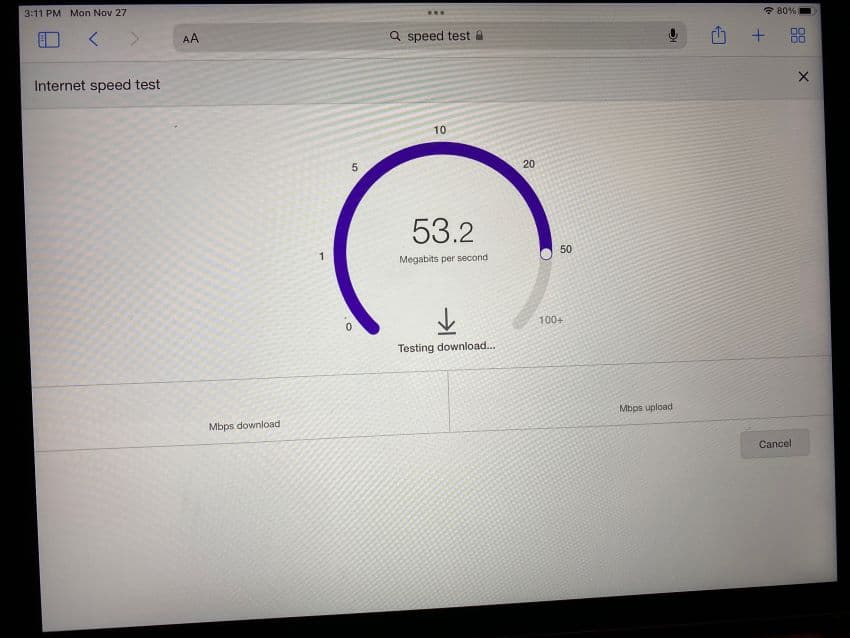
We used the service extensively during our cruise, morning, day and night and across different devices and around different spots on the ship. The speed was solidly in the 40-60 Mbps range and doing everything from checking email to streaming video was solid. The slowest speed we encountered was around 15 Mbps.
Note that we haven’t checked the speed on every sailing and every ship. It could be that larger ships with more passengers connecting could lead to slower speeds. But the move to Starlink has seemed to lead to a significant speed increase.
Reliability of the Internet Connection
It can be frustrating to try to access the web, only to have issues with the internet connection. Unfortunately, you may run into some issues with the reliability of VOOM at times.
For instance, during the first day of one trip we took, the weather was bad, which has an impact on the connection. We had issues accessing websites and the service seemed to come and go. In fact, we had a similar issue during a morning storm later on in the cruise. There were also other times here and there that the connection seemed to be hit or miss for short spurts. Often it was resolved by logging out and logging back in.
Another cruise to Alaska aboard Royal Caribbean saw the Internet completely down for almost a day. When we went down to talk to the staff, we found an entire line of other passengers already there with the same complaint.
On the other hand, our most recent cruise where we saw significantly faster VOOM speeds via Starlink had almost zero issues with connectivity or speed. It was nearly flawless (there was a time or two where the service seemed down momentarily, but then came back quickly).
Bottom line: Don’t be surprised if the connection has some issues occasionally (you are at sea, after all), especially if you run into bad weather. For the most part, however, we found the service reliable.
Can I Stream With VOOM?
These days, streaming is a major part of everyone’s lives. The good news is that yes, you can stream with the “Surf+Stream” package.
We’ve tested various streaming services via the VOOM connection. According to Netflix , the absolute minimum required speed to access its service is 0.5 Mbps, with 3 Mbps recommended for standard definition streaming, and 5 Mbps recommended for HD streaming.
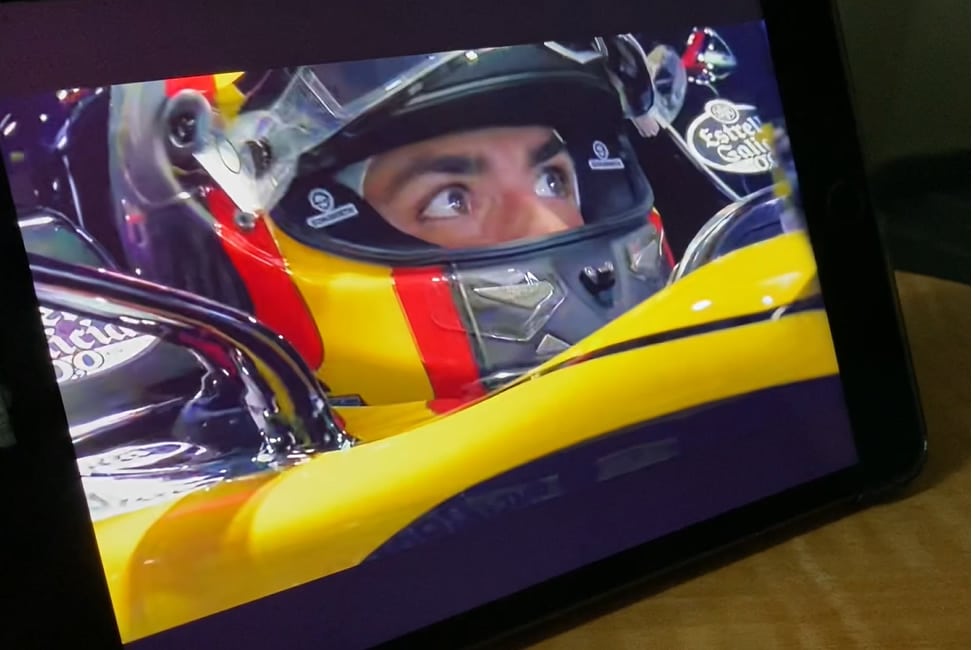
In our tests, streaming shows worked well. The same can be said for streaming on Max, YouTube, and other streaming services we’ve tried.
Note that Royal Caribbean used to offer a simpler (and cheaper) “Surf” package that only allowed web browsing. With the move to Starlink, that seems to have gone away, and the only package offered is “Surf+Stream.”
If you do sail a ship that has both options, you’ll want the faster “Surf+Stream” service to watch video online.
Are There Dead Zones for Service Around the Ship?
You likely know that in your house there may be spots — like the corner of that one bedroom — where for whatever reason your wi-fi just doesn’t work. With a huge ship there may be dead zones for wi-fi service, but we’ve never encountered them.
Yes, there may be spots where the signal strength declines some (from a full three bars to two), but that’s never seemed to impact the speed of service. In fact, whether in a cabin, a dining room, the theater, or anywhere around the ship, we’ve been surprised at how consistent the wi-fi signal is onboard.
Keep in mind we haven’t visited every ship and every nook and cranny. Still, it seems you get a reliable connection no matter where you go.
Can I Use One VOOM Account for Multiple Devices?
One of the big drawbacks of the service is that for a considerable price, you only get the ability to connect one device. So if you want to hook up with your laptop and your traveling partner wants to connect their phone at the same time, then you need to pay for two devices. This costs considerably more.
As a workaround, if you don’t need full-time access you can simply use multiple devices, with only one connected at a time. So you can login on your laptop and browse. When you are done, your spouse can then sign-in on their phone using the same account.
It will inform you the device limit has been reached and ask if you want to connect the new device. If you do, then the new device will login and knock the other device offline.
What About Using Video Chat Services Like FaceTime?
Want to get in touch back home? VOOM allows services like FaceTime and other video calling. During our cruises we’ve been able to use FaceTime on our iPhone. The call quality did depend on the Internet connection. Some calls were choppy here and there, while others were crystal clear. The most recent cruise with the fastest connection made called flawlessly.
Overall, it was easy to talk to people back on land using the service.
Can I Message and Make Calls on my Phone via Wi-Fi?
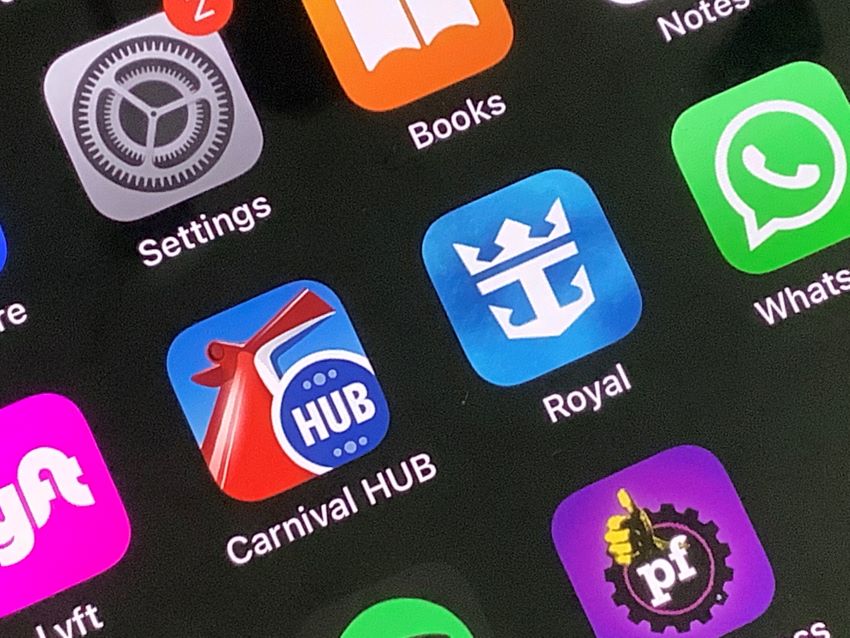
Yes. While connected, we used WhatsApp to both message and make calls through the app. It worked flawlessly, and the voice calls were crystal clear. Other messaging apps or wi-fi calling should work as well. We also used iPhone’s iMessage and had no issues.
Can I Use a VPN With VOOM?
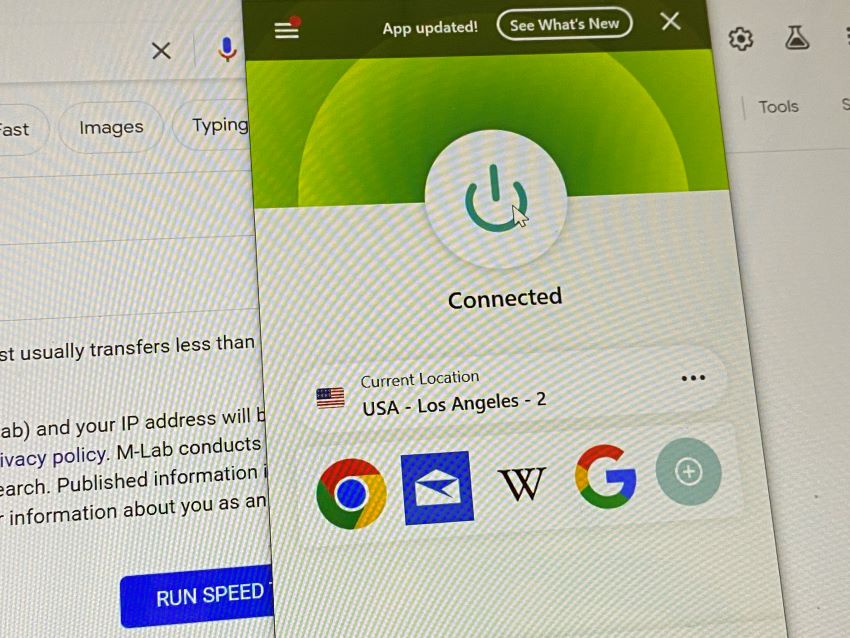
For privacy or work, some people connect to the internet via a VPN. We do too. Using the VOOM service, we had no issues using a VPN while on the ship and were able to easily connect.
Does the Internet Work on CocoCay?
One perk of the VOOM service is that Royal Caribbean has setup service to where you can connect while on their private island, CocoCay . If you’re buying a wi-fi package, this essentially gives you an extra day of service since normally you can’t use the ship’s internet when in port.
We tested the connection while visiting the island and had the same positive impression as we did following the full implementation of the Starlink service. Speeds were blazing fast, even with two ships in port during the day. While there was some variance, they were generally in the 30-60 Mbps range. As well, the connection was solid.
So if you wanted to make a video call back home to make your family jealous of where you were visiting, that would be no problem.
Can I Work or Attend School With the Service?
Generally we are hesitant to say that a passenger would be able to work or attend classes online using a cruise ship’s internet connection. Reliability can be spotty and speeds can be slow.
Following the rollout of Starlink and our recent experience on a cruise to The Bahamas, we’ve changed our tune for Royal Caribbean’s VOOM service. During this most recent cruise the connection was solid with no hang-ups or dropped connections.
Meanwhile, the speeds of upwards of 60 Mbps were plenty fast for the vast majority of people. With that, you could attend Zoom meetings, watch lectures, upload large files or anything else you might need.
If that’s going to be the experience across the fleet, then working or going to school online should be no issue.
Have more questions about the specifics of using the VOOM service? Let us know in the comments below.
Popular: 39 Useful Things to Pack (17 You Wouldn't Think Of)
Read next: park & cruise hotels for every port in america, popular: 107 best cruise tips, secrets, tricks, and freebies, related articles more from author, what to do on a cruise 70 fun things to do on the ship, world’s second-largest cruise ship debuts this weekend (see how big), cococay: 21+ tips & things to know for royal caribbean’s island (prices, what to do, and more), the best (and worst) royal caribbean ship health inspection scores, according to the cdc, the world’s second-largest cruise ship officially joins royal caribbean’s fleet, 24+ things to do at perfect day at cococay (including 12 free things), 65 comments.
This is an absolute lie. I am currently on a cruise, and I cannot even access a low/grade video, let alone play a game, download anything important, (heaven help you if you have to upload anything), or listen to Apple Music. It was 454.00 for 3 devices, and I cannot text my grandkids. So, my advice; don’t cruise if you need internet. Hotels everywhere have free internet. You’re much better off booking a vacation to where you’d like, unless of course you like a soda now and again or you need internet access. Truth.
I’ll be aboard the Icon of the seas on its Maiden voyage Jan 23. Do you know if I will be able to connect to my work vpn while aboard the cruise?
We had no issues on a recent cruise (not aboard Icon) connecting via our VPN, so it should be ok.
My wife and I are traveling on Wonder of the seas with RC in a week. We have the option of us both doing 1 device. Or I can do 2 devices under just me which is cheaper. If I do 2 devices under my name will my wife be able to have access as well under my 2nd device?
Yes, she will just need your login info.
You don’t mention anything about data limits. How much are you limited to, or is it unlimited? Royal Caribbean doesn’t mention anything about it as well. Guess a phone call is required to get straight answers.
I’ve never seen anything about data limits. It’s likely not going to be an issue unless you’re downloading massive files one after another. So if you stream a few movies during the cruise, that’s likely ok. But if you’re downloading the Library of Congress, they might notice and ask you to stop.
I know this is a late response to this 2018 article, but wanted to give you some info about the StarLink network. The strength of your download speed is dependent on which satellite you’re ship is closest to – in other words, regardless of RCCL’s contract, if there is not a SL satellite overhead, there won’t be SL service. When this article was written, the StarLink web was just getting started. Finally this year, Elon has announced the network will be completed “in 2023”. Ironically, I live in Cape Canaveral, among many SpaceX workers, and no one I know is using the service locally.
We’ll be on the ALLURE from 9/3-10. My wife purchased the “Surf only” package (1phone, and an Android). Will she be able to do text messaging or be able to use FB messenger?
Should be able to do so. I normally recommend always getting the fastest package, even though it may cost more. In general speeds are slower than we are all used to, so skimping here can be a pain.
Dear Tanner, do you have some update on the latest’s SL performances on Royal fleet? I Mean, I have some business that requires some Video calls / streaming and I`m afraid to not be able to do them while cruising… Don’t see the average 3-5Mbps you commented enough to those services…
I sailed a ship with Starlink equipped (Allure OTS in late 2022) and to be honest, I saw zero difference in connectivity.
Just want to make sure I understand correctly. If I am sailing with my husband and two children, I can by the package for just one of us with 4 devices and we can all share? That is significantly cheaper than buying the package for all of us, but want to make sure that this is allowed.
Yes, you can buy a four device package and all be on the wi-fi at once.
Hi, I’m thinking of cruising on Explorer of the Seas with Royal Caribbean. I’m going to need to possibly have an ethernet connection (wifi may be an option but not sure yet) for some zoom meetings I’ll have to do for work while there. Curious if you know what the speeds are now with Voom since this article was written and if they have the option to connect via ethernet in staterooms or somewhere else on the ship. Just not sure I can completely rely on cruise internet to get me through a bunch of zoom meetings. Thanks for your input.
Jose — I’ve never seen an option to connect via ethernet. And even if there was, you’re still relying on a satellite signal at sea. Royal Caribbean has moved to Starlink which is said to offer faster speeds, but on the ship we sailed with the service in November, we noticed no difference. At that point, service was in the 5-10 Mbps.
I will say that I’ve never used Zoom at sea, but have made video calls. The experience varies from perfectly smooth to very choppy, depending on the signal at that point. I’d think a schedule of full-fledged group video calls might be a big ask in my experience.
Jose, expect a 4 second delay when on any sort of “real-time” communication program at sea (like Zoom). There is quite a bit delay added between the ship and the satellite, then another delay added between the satellite and the Earth.
Patience is needed.
I phoned Royal Caribbean to query whether it was necessary to pay for 4 devices two my own two husbands if only using one each at any given time. They said need to pay for 4 which is more than £1000 in UK. Reading above information on this usage basis, we only need to pay for one device each and switch between using the connection on our phone and laptop. Is that correct please?
Right. If you don’t need all four connected at once, then you can pay for one device and switch between them.
Hi, I’m going on Mariner of the Seas at the end of the month. I need to log into an app which requires GPS location when I sign in and out at the end of the day. If I purchase the Surf & Stream using ships WiFi and I put my iPhone on airplane mode, will my app work and give my location?
Oh, that’s a tough question. I’m not 100% sure, but it seems like the location services tie to where the signal is based. For instance, I think I remember seeing mention of my device being in Miami while online on the ship. I would count on accurate GPS positioning not working, but not totally sure.
On Day 7 on Liberty of the Seas- bought the surf+stream – haven’t seen anything above 600Kbps since day 2- average has been between 200 and 400 Kbps or about 10X slower than the promised 2-3 Mbps. My business is dead in the water because I can’t do simple functions like send documents for esignature, access my CRM application or do other basic business tasks. I can barely send an email. Max speed in our stateroom (where you might actually want to stream a movie) has maxed out at 170 Kbps- I echo previous comments that they treat you like an IT idiot- and say things that don’t actually make sense- it might work on some of the old retired folks on this cruise but not everyone- the least they could be is honest.
Just off Mariner of the Seas. Boom was pretty bad. I had Voom Surf and Stream package. IT Rep told me Mariner is limited to 2Meg up an download. My experience was between 1.0 and 1.8 with upload being faster than download one time. Voom is different from one RCI type ship to another but RCI does not publish that disclaimer. Buyer beware!
can i connect to vpn using VOOM
That’s one that I’m not sure about. Royal Caribbean doesn’t mention anything specifically on its website and haven’t personally tested it before.
Will the Surf&Stream speeds support being able to take a Covid test for returning to the US. I’ll be on Serenade for an Alaska cruise.
I would think it should work. I was able to stream Netflix while at sea with it.
Cruising Jan 30th. I will need to log into daily Zoom calls for school. I live in Canada and have been out of country before and Zoom didn’t work. I wondered if you have any experience with this. Thanks
Not specifically with Zoom, but according to their requirements, you need to have 3.8Mbps/3.0Mbps (up/down) for group calls. It’s less for lower quality video. So you should be able to get that. Zoom might be blocked on the “Surf” (lower tier) but should be available on the “Surf + Stream” tier.
Keep in mind that your connection speed can vary depending on location and weather.
Hi cruising Jan. 8th on symphony of the seas purchased voom will I be able to call my brother back home anytime from any port or at sea ? Also will my brother be able to call me anytime from home when we’re at a port or when we’re at sea. Thank you
For phone calls, that will depend on the wi-fi call settings on your phone. That said, I’ve done video calls via Facetime and WhatsApp and it worked well.
hi there we are going to Alaska on Quantum of the Seas and My teen needs internet for school work. How well does it work going thru Alaska?
Haven’t personally tested it in that region. But in general, it’s much slower than at home. If they are connecting via video chat, then it might be pixelated/laggy… or it could be clear (it varies in our experience). If it’s getting to websites to submit assignments, then it should be fine.
I just experienced the worst possible internet service on R.C.’s Grandeur of the Seas. Speed measured in Kbytes instead of Mbytes, ping never less than 600 and even the end of cruise ‘deal’ cost $50 for 3 days of service. I did complain and was treated as if I were a computer novice, which I am not. They informed me that maximum speed was rated at 4 Mybtes but wifi service would be somewhat slower. Yes, 90% slower.
We have AT&T mobiles, and see that they have cruise packages in conjunction with the cruise lines. So if we purchase their $100 unlimited package for each phone, does that mean we use it on board, and don’t have to purchase VOOM? And we use our phones as usual? Adventure of the Seas on December 15.
Not entirely sure about the ins and outs of your phone’s plan. Sounds like it would work for you, however.
I am booked on Liberty if the Seas and purchased a 4 device package. There are 4 of us going. Does that mean we all 4 can log on at the same time or do I need to have a package for each?
If you booked the four device package, that means you can log on all at once. If you book the one device package, you can all four use it, but only one person at a time.
I sailed on Ovation of the Sea 7/5 – 7/12/2019. I purchased Voom for one device. It worked when it felt like working. I visited the Voom desk multiple times and was told that the area we were sailing in just had bad service. I paid nearly $100 for the week and did not get my money’s worth. They advertise that they are the fastest and best at sea. That is not true. It sometimes took me 30 minutes to log on. Very frustrating. I can’t even find someone to talk to about getting some kind of a refund.
If I purchase the Voom, will I be able to use a fire stick on the Vision of the Seas? How is the internet connection on The Vision of the Seas?
On the Independence of the Seas the internet is horrendous. Not worth the price. RC has fixed the TVs so you cannot use a fire stick even if the internet was faster.
We’d highly doubt it. The connection isn’t always great and the input ports on the TV are usually disabled.
Currently on the Voyager of the Seas, off the coast of Vietnam.
The service is much better than what we’ve had on Holland America in the last couple years.
However it’s hardly “streaming” capable. I would guess that the massive use of handheld devices is causing the systems to collapse under the load. All of these devices are constantly making updates to Twitter, Snapchat, Instagram, etc and the cruise companies are still not equipped to deal with it.
Thanks for the update! It really helps other passengers.
Royal Caribbean Rhapsody INTERNET SUX! Connectivity was extremely poor and at times nonfunctional. It consistently dropped connections requiring one to constantly re-sign in. Speed tests showed under 2Mbps consistently tested over the course of 6 days in several areas of the ship which made streaming or uploading photos to social media simply impossible, never mind video calls. This indicated a switch not outputting enough POE to supply enough power to WAPS or simply not enough WAPS aboard for consistent coverage. Very disappointed that it was touted “the fastest internet at sea”. Completely useless and unmanageable. Seeking a refund.
Ah a comedian! 😉
So if I paid for 2 devices, I assume I’m just given 2 codes? We have 2 rooms and hoped each room could use 1 device. (Even though one person bought the 2-device package?)
It’s not codes, it’s just that you login to use the Internet. With two devices paid for you will be able to login with both at the same time. If you only paid for one, you would be booted off the other device when a new one logs in.
I prepaid for Voom on my upcoming cruise because they offered a discount precruise. So when I go to sign in, will they know that? I want to make sure I don’t get charged.
The system should recognize that you’ve already paid. Don’t worry though, there are staff members on the ship who are there to help people get online. If you have questions you can just talk to them to get everything sorted out.
I´m currently in Mariner of the Seas, and have been doing several speed test fom my phone (iPhone10) and my laptop (Lenovo Yoga); I´m using the “Voom Surf + Stream” service, and the speeds have have been: Ping at 628ms, Download at 0.78 Mbps and Upload at 0.65 Mbps. Video chat is not possible. Video streaming is very very slow and poor quality.
Thank you for the update! There’s no doubt that speeds will vary from ship to ship, but those speeds are particularly slow.
I tried to stream my DirecTV on my tablet while in port in Canada, and it did not work. I also tried to watch via Bravo’s website, and I got an error message that I could not use the service due to my location. I called DirecTV and they informed me that I cannot access content from my account outside of the US. Will I be able to connect while using Voom on a Caribbean cruise? I’d like the ability to stream live TV or view on demand shows during down time.
We aren’t sure, but would guess that you would not given that you will be outside the U.S. If you have Netflix, you can download some shows to watch offline. Maybe DirecTV has the same feature?
I read that the ships use US IP addresses. Has anyone else heard or have experience with this?
We’d love to know! We did you Youtube and Netflix and didn’t seem to have any issues with being out of the country. Not sure if other programs like DirecTV might raise an issue.
Hi, I’m going on Anthem of the Seas in 2 weeks. I teach English to kids in China over the internet live each day. I had planned on teaching from the ship. Now, I’m worried. I’ve paid for Voom streaming but 3mbs won’t work. I need at least 20.bs and a ping no higher than 100 at the most. Is there any service anywhere I can buy? Help!
That’s a tough one. I would guess that you can likely connect via Skype or a similar service, but the video will likely be a bit grainy through VOOM. You could connect to faster wi-fi when you are in port. Many restaurants and shops in ports offer wi-fi as a service to their customers.
Becky, did it work? I do the same thing and am going on my cruise at the end of the month.
LEAVE A REPLY Cancel reply
Save my name, email, and website in this browser for the next time I comment.
11 Smart Things to Pack for Your Cruise Cabin
Explained: differences between large and small(er) cruise ships, the cheapest u.s. cruises for all of 2025 (starting at under $200), hotels with cruise shuttles for every major port in america, 107 best cruise tips, tricks, secrets, and freebies, 39 useful things to pack for your cruise (including 17 you’d never think of).
- Privacy Policy
- Terms & Conditions
- CruiseMapper
- Cruise news
- Captain and first officer detained following disembarkation...
Captain and first officer detained following disembarkation incident in Santorini
The captain and first officer of the high-speed ferry Champion Jet 1 (IMO 9151008) have been arrested following an incident in which two passengers were injured during disembarkation at Santorini's Athinios port .
According to coast guard reports, a 35-year-old woman sustained injuries to the back, neck, and arm after slipping on the disembarkation ramp. A 53-year-old man, who attempted to assist her, suffered a leg injury.
The injured passengers sought medical treatment independently at Santorini’s general hospital.
The incident occurred on Sunday, August 18, and the ferry's officers were arrested the following day under an expedited warrant.
They face charges of breaching safety protocols, involuntarily causing injury, failing to provide medical assistance, and endangering the ferry’s passengers.
Superyacht sinks latest: Families cling to air pocket theory - as divers form strategy to enter wreckage
Search efforts have entered a third day for six tourists missing after a yacht sank off the coast of Sicily. Experts hope air pockets may offer a chance of survival, while divers have warned a "world of objects" stand in their way. Listen to a Daily podcast on the search as you scroll.
Wednesday 21 August 2024 10:03, UK
- Superyacht sinking
- Missing's brother hopes air pockets offer chance for survival
- 'World of objects' stand in way of divers - as strategy formed
- Watch: CCTV captures yacht seconds before it sinks
- Six missing - including tech boss, Morgan Stanley executive and top lawyer
- Crew survivor 'spared by grace of God' - as staff named
- Captain speaks out for first time
- Explained: What causes waterspouts? | Inside the superyacht
- Listen to the Daily podcast above and tap here to follow wherever you get your podcasts
- Live reporting by Brad Young
Two crew members who survived the disaster have said it is a "miracle" they are still alive, according to reports.
Leah Randall, 20, from South Africa, was photographed leaving the coastguard headquarters on Monday, alongside fellow crew member Katja Chicken, 22, from Germany.
The Italian news agency ANSA reports they were in tears in the hall of the Domina Zagarella hotel in Santa Flavia, which has become the headquarters of police and rescuers and where they are staying with other survivors.
"We are alive by a miracle," they said, while one added: "It was terrible," according to ANSA.
Ms Randall’s mother Heidi Randall previously told Sky News: "I'm beyond relieved that my daughter's life was spared by the grace of God.
"It doesn't make it any easier living with the heartache of those who have lost their lives or are missing.
"My very deepest condolences to the chef's family as they formed a great friendship."
The Bayesian yacht was the victim of a "black swan event", says the head of the Maritime Search and Rescue Council.
A black swan event is a term used to refer to a high-impact, rare incident that is difficult to predict, but is often rationalised in retrospect as having been inevitable.
Matthew Schanck says: "Looking at the extreme weather, if it was a waterspout, which it appears to be, it's what I would class as like a black swan event."
Waterspout is the name for a tornado-like rotating column of air spawned from the base of a cloud, usually during a thunderstorm.
"Even outside of the maritime industry, all industries struggle with the black swan events."
Mr Schanck says he is confident the authorities will "get to the bottom" of what caused the shipwreck, thanks to the accounts of survivors, witnesses and examination of the ship.
Search and rescue teams will be trying to identify if any more survivors could have escaped from the yacht, says marine investigator James Wilkes.
Speaking to Sky News, he says they will want to get into cabins as quickly as possible to "identify whether there is anybody still left on the vessel or whether the missing people could have escaped from the vessel and be somewhere else".
The "safety of life at sea" will be a priority, he says, and the depth of the wreck at around 50m underwater means divers can only spend around ten minutes down there at a time, with their work further hampered by blocks to passageways.
But remote operating vehicles will be able to scan the wreck and use CCTV to find an access point to make diving and the recovery of any bodies much safer for the teams.
Mr Wilkes says it looks like the boat was hit by a "very intense and significant" weather incident and investigators will be looking at how seawater flooded into the very large yacht, which has a lot of open deck space.
He says "it's shocking and disturbing" how quickly the yacht went down, adding that investigators will be looking at physical evidence as well as talking to witnesses and survivors to confirm the theory.
By Ashna Hurynag , news correspondent
The British mother who says she held her baby daughter above the waves as the yacht sank near Sicily was sleeping on deck as the storm hit, an Italian doctor has said.
Charlotte Golunski was among 22 people on board the Bayesian when a tornado struck on Monday morning, with one dead and another six still missing.
Ms Golunski, 35, survived along with 14 others, revealing to Italian newspaper la Repubblica she held her daughter Sofia "afloat with all [her] strength".
Speaking to Sky News correspondent Ashna Hurynag, the head of paediatric care at the Di Cristina Children's Hospital in Palermo said Ms Golunski was away from her partner at the time of the storm.
"She said that she was sleeping with the child on deck while her husband was a little further away in another part of the boat and she felt the oscillations of the ship," Dr Domenico Cipolla said.
"In an instant it was dark and she found herself in the water in just a few minutes. She said she tried to hold on to the child but lost the child from her grip for three seconds.
"She then managed to catch her in the water."
Read on here...
A freak wave may have flooded the yacht with water through an open door or hatch, causing it to sink, according to reports.
Investigators believe the vessel sank because of a waterspout during a heavy thunderstorm.
But they are trying to understand how the boat went down in just 60 seconds when a smaller vessel around 100m away remained intact, according to La Repubblica.
The Italian newspaper reports the hull and the mainmast are intact and there are no signs of any collisions.
The most widely accepted theory is that during the storm an enormous amount of water entered the boat because of a freak wave from the stern in a very short time, probably through a door that had been left open, it says.
This would have caused the yacht to immediately lose balance and sink.
Search and rescue boats have been spotted heading back out to sea this morning.
The Bayesian was moored around half a mile off the coast of Porticello when it sank at around 5am local time on Monday.
Rescue crews, technicians, engineers and the port authority held a briefing to take stock as the search resumed around 6.30am local time, reports Giornale Di Sicilia.
Divers aim to reach the cabins of the ship today, aided by patrol boats and helicopters.
A very strong, lightning-heavy thunderstorm struck the Italian coastline on the evening the yacht sank, says a meteorologist at the University of Reading.
Dr Peter Inness tells Sky News the conditions meant it wouldn't be surprising if a waterspout - a member of the tornado family - was responsible.
That coast of Sicily is one of the world hotspots for waterspouts, he says.
"There was a very strong, active thunderstorm that afternoon and evening, going into the night. Lots and lots of lightning. And that's the kind of situation that can spawn waterspouts very easily.
"So if it was a waterspout that hit the boat, it wouldn't be a surprise."
But while you can estimate conditions, Dr Inness says it is "almost impossible" to predict when and where waterspouts will occur.
Waterspouts explained: A waterspout is a rotating column of air spawned from the base of a cloud, usually during a thunderstorm.
Most waterspouts are fairly mild and only tens of metres in diameter.
The divers' priority is to reach the cabins, where the missing tourists may have been sleeping at the time of the storm, says news correspondent Ashna Hurynag.
But they have been hampered by the amount of debris and furniture in the boat.
Search and rescue teams speculate some of that furniture was dislodged as the yacht capsized, blocking doorways and preventing people from escaping, says Hurynag.
" They're really being hampered by the amount of furniture, the amount of debris that is underwater within that vessel.
"The yacht is also in a complicated position. It's tilted on its side."
She adds: "They're having to work under very tight conditions and in searing heat."
Equipment has been shipped to the east coast of Palermo to aid their efforts, including an underwater remote-controlled search vehicle.
" People are expecting perhaps to see the hull of the ship being lifted up, the vessel itself being lifted out of the water: That's not going to be anything we're going to see for a very, very long time," says Hurynag.
" The priority is to try and preserve its position as much as possible because it is intact, and try and access it from outside."
As the search operation continues, investigators are attempting to figure out how the boat sank.
The captain will be key to this investigation, says Hurynag - as well as questions over the design of the boat and the weather - but he "was in an incredible amount of shock" when he spoke yesterday.
Italy's fire brigade Vigili del Fuoco said it has developed a plan to enter the wreckage of the yacht.
Nineteen divers have been going down in groups of three and attempting to open a passage at the stern, La Repubblica reported.
This involves breaking through a glass window in the lounge area of the main deck to access the interior of the 56-meter yacht.
But efforts to reach the cabins are still obstructed by a "world of objects", fire department diver Marco Tilotta told Reuters news agency.
"So, getting inside and descending into the compartment below from the stairs that are narrow and going into all of the cabins is a really hard and difficult job.
"We are not stopping. We have resources, manpower and means."
The Italian coastguard has not ruled out the possibility that those missing may still be alive, with experts speculating air pockets could have formed as the yacht sank.
That the vessel sank at speed and remains intact on its side "could favour the formation of small air pockets inside", said Dr Jean-Baptiste Souppez, a senior lecturer of mechanical, biomedical and design engineering at Aston University.
"This is obviously highly speculative and impossible to predict accurately."
Nick Sloane, who led the salvage operation for the wrecked cruise ship Costa Concordia in 2012, told Sky News: "They've got a very small window of time to try to find people stuck inside with hopefully an air pocket, and they could be rescued."
Jeremy Bloomer, the twin brother of missing Morgan Stanley International bank chairman Jonathan Bloomer, told the BBC his fingers were crossed.
"It's a slow process and it will take time. So there might be air pockets, but we don't know. It's still wait and see, so fingers crossed."
David Tabizel, who established software company Autonomy with missing British tycoon Mike Lynch, told Sky News: "I'm just heartbroken for him and his family and I hope there's a miracle about to occur.
"If anyone has the resilience to survive this - he does. And I hope he's found an air pocket."
Dr Souppez said a sign the rescuers may be looking for is a "banging noise at regular intervals".
"This is common practice on submarines and was one of the signs the search mission for the Titan submarine was looking for after it went missing last year."
Yesterday, Vincenzo Zagarola of the Italian coastguard said the missing were unlikely to be alive.
"Never say never, but reasonably the answer should be not."
Be the first to get Breaking News
Install the Sky News app for free


IMAGES
COMMENTS
The speed of cruise ships is measured in knots (Kn), 1 knot is 1 nautical mile per hour. Cruise help - for the "normal" speed values, multiply knots by 1,15 (mph), or 1,852 (kph). Below, you may compare the average passenger ship speed in the huge fleets of several big cruise ship companies and lines. The knot is a nautical term, meaning ...
The Blue Ribband, awarded for the fastest crossing of the Atlantic, still belongs to the SS, and that is a record here to stay with no new ocean liners coming up in the near future. Ship: SS United States. Type: Ocean liner. Top Speed: 39 knots [44.87 mph or 72.24 kmph] [claimed top speed - 43 knots]
Let's take a look at three of the fastest cruise ships in the world. 1. Cunard Line's RMS Queen Mary 2: With a top speed of just over 30 knots (35 mph), the Queen Mary 2 takes the crown as the fastest cruise ship in the world. This majestic liner is known for its elegant design and luxurious amenities.
The Bottom Line. Cruise ships travel relatively slowly, with an average speed of 18 to 22 knots (20 to 25 miles per hour). Ocean liners like Queen Mary 2 can reach top speeds of 30 knots, but for true cruise ships, the maximum speed is more like 25 knots. So when asking how fast can a cruise ship go, really you're asking about theoreticals ...
High-Speed Cruising: On the other end of the spectrum, certain cruise ships are designed and built for high-speed cruising. These ships can reach speeds upwards of 25 knots (29 mph or 46 km/h) and are commonly found on transatlantic or transpacific voyages, where time is of the essence, or on specialty cruises focused on fast-paced ...
High-Speed Ferries: Smaller vessels, resembling cruise ships, but categorized as high-speed ferries, can surpass 30 knots. The fastest cruise ship in the world, the Royal Caribbean International's Anthem of the Seas, can reach a top speed of 42 knots (48.6 mph). However, this is only used in emergency situations.
How fast can a cruise ship travel? Depending on the exact ship, cruise ships can get up to a good speed given the need. Cruise ship speeds are measured in knots, and one knot is 1.15078 miles per hour on land. Royal Caribbean says its cruise ships go as fast as 18 to 20 knots, depending on the specific ship and itinerary travelled.
A knot is the nautical measure of speed used by cruise ships and other maritime vessels. One knot represents 1 nautical mile per hour. But "knot" isn't simply a misspelled nickname for "naut" (as in nautical mile). Its origins are far more literal, according to the United States' National Ocean Service. In the 17th century, ship crews measured ...
The fastest cruise ship currently in service is the Queen Mary 2, capable of speeds up to 30 knots . Factors That Affect Cruise Ship Speed Pin. Several factors can affect the speed of a cruise ship: Cruise Itinerary: Cruise ships must arrive on time at each port of call. Arriving late at a port leads to substantial fines and unhappy passengers ...
The average cruise ship speed is about 18-22 knots (or 20-25 MPH). Keep in mind that this is the average speed, not the fastest speed the ship can travel. There are also a number of factors that ...
Here is the cruising speed of some popular cruise ships: Carnival Cruise Line: Carnival Vista: 23 knots. Carnival Breeze: 22 knots. Carnival Liberty: 19.6 knots. Carnival Fantasy: 19.5 knots ...
A cruise ship typically travels at a speed of 20 to 25 mph (or 18 to 22 knots). A high-speed cruise ship can travel at speeds of 30 knots or more, compared to the 21 to 24 knots of standard cruise ships.
The fastest cruise ships can reach a top speed of thirty knots. Thirty knots is fast for a ship, and most cruise ships never travel at it. Instead, they travel at their cruising speed. The speed of a cruise on a Royal Caribbean Cruise ship, for example, is 18-20 knots. And most other cruise lines have an average speed of between 19 and 22 knots.
Now that you know the concept of ship speed, let's dive into the meaty bit — how fast do cruise ships go? Most modern cruise ships — from the dazzling Royal Caribbean vessels to your everyday ocean liners — glide through the seas at an average speed of about 20-30 knots. That's roughly 23-34 mph on land. Yep, that's slower than your ...
The fastest ship in the world is HSC Francisco. The ship was officially released in 2013, moving at about 58.2 knots (108.1 km/h). Its passenger capacity is over 950 and can carry over 120 cars. This High-Speed Catamaran was constructed in Tasmania, Australia, by Incat Shipyard and named after Roman Pontiff Pope Francis. Read on and find out ...
It's VOOM, the fastest cruise wifi- now available on the entire cruise ship fleet. VOOM is instantly streaming, sharing on the fly, high-speed cruise wi-fi/internet. Enjoy all your favorite movies and shows on Netflix and share every unforgettable moment of your cruise vacation.
As of June 2024, all three ships on Star Clippers fleet -- Royal Clipper, Star Flyer and Star Clipper -- have been outfitted with Starlink internet service. Other cruise lines that have joined the ...
High-speed ships to Miyajima depart from the No. 6 jetty in front of the terminal. Nearby parking areas Hours Open 24 hr./day, year-round Parking fees The first hour is free. Every 30 min. thereafter is 100 yen. After exceeding 1,000 yen, a flat sum of 1,000 yen will be charged up to 24 hr. From the 2nd day, every 30 min. will be 100 yen.
Lindblad Expedition offers complimentary, basic Starlink Wi-Fi to all guests aboard their ships, with the exception of Delfin II. There are two levels of bandwidth available for purchase: Enhanced (for social media, email, web browsing and internet-based messaging) and Premium (for streaming and high-bandwidth usage).
Price of Royal Caribbean's VOOM Internet Service. Rates on the ship were seen at $25 for the first device and $17 a day for additional devices. You can often find cheaper rates by booking the package before the cruise. First things first, if you are planning to get online during your cruise, then expect to fork over some considerable money.
The captain and first officer of the high-speed ferry Champion Jet 1 (IMO 9151008) have been arrested following an incident in which two passengers were injured during disembarkation at Santorini's Athinios port.. According to coast guard reports, a 35-year-old woman sustained injuries to the back, neck, and arm after slipping on the disembarkation ramp.
Experts have said we're in a critical 24 hours in the search for survivors. Earlier, Nick Sloane, who led the salvage operation for the wrecked cruise ship Costa Concordia, said survivors might be ...